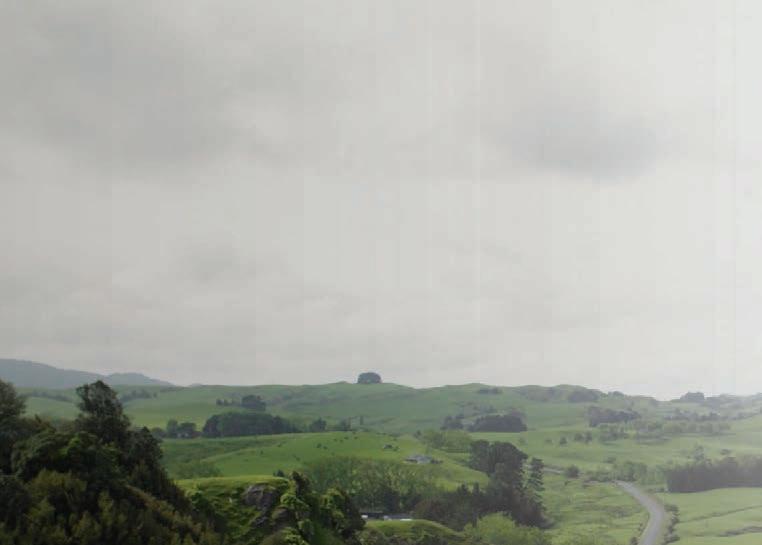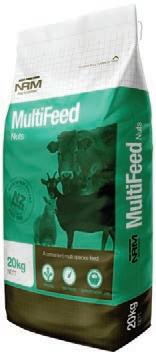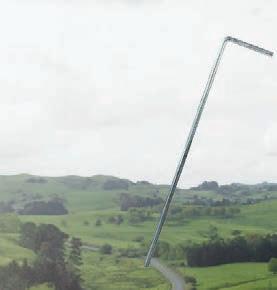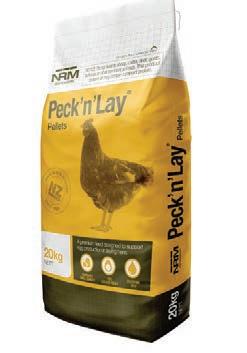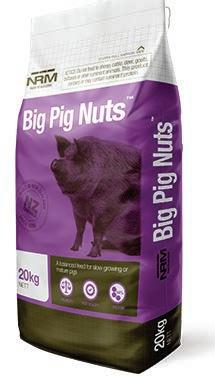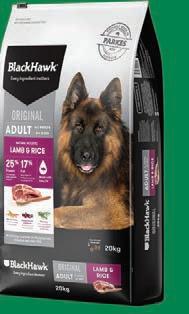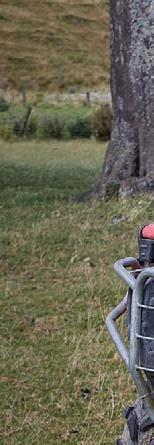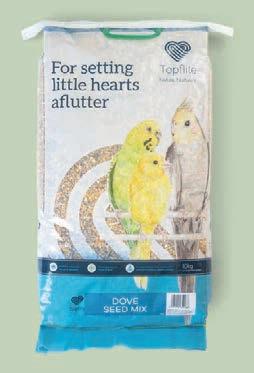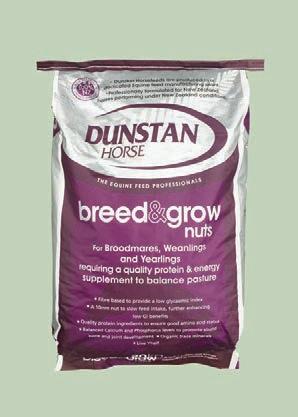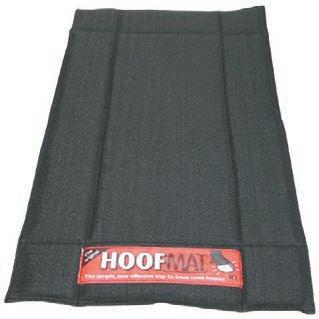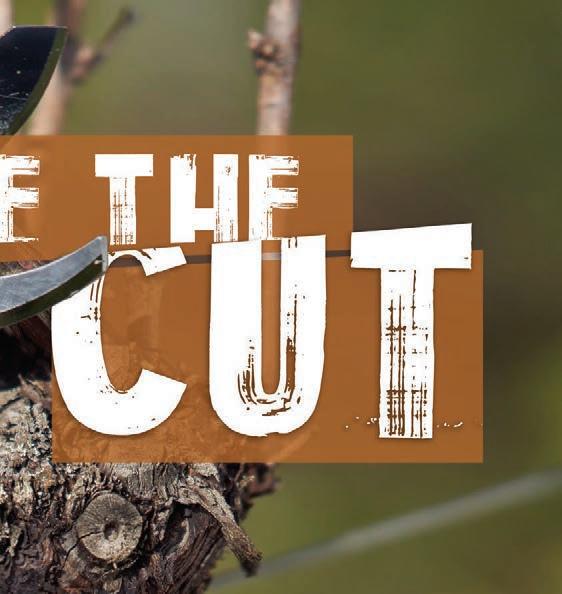









LIVESTOCK companies are off the hook and farmers are being hunted down in a new recall of insolvent transactions following the liquidation of a New Zealand live export company.
In a change of legal advice, the heat has come off the livestock companies while farmers have become the new target for repayment of millions of dollars being recalled by the liquidator of the failed Hamilton-based live export company Genetic Development (NZ) Exports Limited Partnership (GDEx). GDEx was put into liquidation by the High Court in Hamilton on September 5, 2022, with directors blaming the company’s financial challenges on a failed shipment of cattle to China, known as the Ocean Ute shipment.
The livestock ship involved never came to New Zealand in early May 2022 to collect 12,000 head of cattle waiting on two preexport isolation farms.
Total direct costs and losses for the failed shipment added up to more than $5m.
Initially all livestock companies involved with the Ocean Ute shipment received letters advising that transactions at the time of GDEx’s last live cattle consignment to China, prior to the company’s liquidation in September 2022, were insolvent.
The companies were advised that by way of Assignment of Proceeds, payments were insolvent transactions under the Companies Act 1993.
Accordingly, the livestock companies were directed to return the funds.
Whether individual farmers would be held responsible and liable to return payments had not been determined at that time.
Livestock agent companies spoken to by Farmers Weekly last week said they had responded through their lawyers but heard no more from the liquidator.
There is good reason for the silence.
Further investigation and a change of legal advice now has liquidator Malcolm Hollis trawling through the GDEx database to track down more than 100 farmers who received payment, deemed insolvent transactions, via the livestock agent companies.
“The advice we received initially was we need to write to the livestock agent companies and ask, ‘Please pay the money back’,” Hollis said.
“Now adjusted legal advice is we need to go directly to farmers because effectively the livestock companies paid the money on.”
Others in the supply chain –including trucking companies, quarantine businesses and all other services and goods industries
Continued page 3

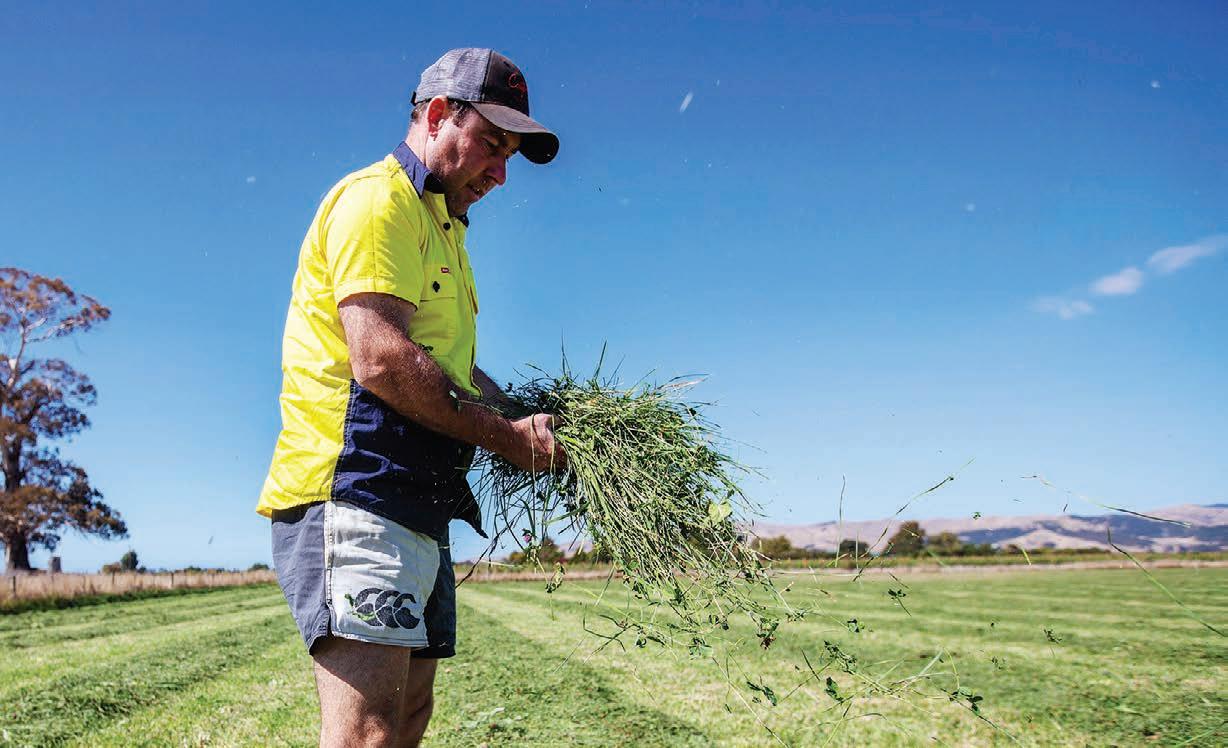
Marlborough hay producer Scott Bishell of Caythorpe Farm has been making baleage for about 25 years. This year he received enquiries as early as December as drought conditions started to bite.
NEWS 3
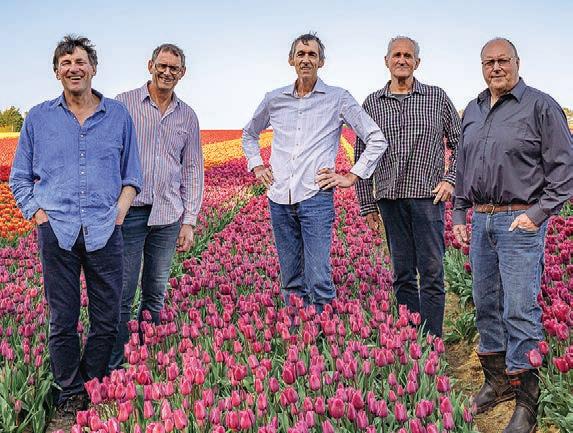
Beef prices should recover by mid-year but sheepmeat may take longer.
After more than 70 years in business, Southland tulip grower and bulb exporter Van Eeden Tulips has shut up shop.
SECTOR FOCUS - HORTICULTURE 20-23
Synlait is battling for nothing less than survival, says Keith Woodford. OPINION 17
EDITORIAL
Bryan Gibson | 06 323 1519
Managing Editor bryan.gibson@agrihq.co.nz
Craig Page | 03 470 2469 Deputy Editor craig.page@agrihq.co.nz
Claire Robertson Sub-Editor claire.robertson@agrihq.co.nz
Neal Wallace | 03 474 9240
Journalist neal.wallace@agrihq.co.nz
Gerald Piddock | 027 486 8346
Journalist gerald.piddock@agrihq.co.nz
Annette Scott | 021 908 400
Journalist annette.scott@agrihq.co.nz
Hugh Stringleman | 09 432 8594
Journalist hugh.stringleman@agrihq.co.nz
Richard Rennie | 027 475 4256
Journalist richard.rennie@agrihq.co.nz
Nigel Stirling | 021 136 5570
Journalist nigel.g.stirling@gmail.com
Lana Kieselbach | 027 739 4295 production@agrihq.co.nz
ADVERTISING MATERIAL Supply to: adcopy@agrihq.co.nz
SUBSCRIPTIONS
0800 85 25 80 subs@agrihq.co.nz
PRINTER Printed
Andy Whitson | 027 626 2269
Sales & Marketing Manager andy.whitson@agrihq.co.nz
Andrew Fraser | 027 706 7877
Auckland/Northland Partnership Manager andrew.fraser@agrihq.co.nz
Jody Anderson | 027 474 6094
Waikato/Bay of Plenty Partnership Manager jody.anderson@agrihq.co.nz
Palak Arora | 027 474 6095
Lower North Island Partnership Manager palak.arora@agrihq.co.nz
Omid Rafyee | 027 474 6091
South Island Partnership Manager omid.rafyee@agrihq.co.nz
Julie Gibson | 06 323 0765
Marketplace Partnership Manager classifieds@agrihq.co.nz
Andrea Mansfield | 027 602 4925
National Livestock Manager livestock@agrihq.co.nz
Real Estate | 0800 85 25 80 realestate@agrihq.co.nz
Word Only Advertising | 0800 85 25 80
Marketplace wordads@agrihq.co.nz PUBLISHERS
Dean



our pioneering spirit tells us nothing’s out of reach

New Zealand exported red meat products worth $932 million during February, with demand from the United States helping to offset the weak Chinese market.
Overall, exports in February were up 10% on 2023, largely due to a rise in sheepmeat and beef exports, particularly to the US. Sheepmeat exports increased to nearly all major markets, apart from China.
The government plans to direct an independent review of methane science and targets and will also finalise policy to keep agriculture out of the Emissions Trading Scheme.
In other plans of note to farmers, the government will introduce legislation to amend the Resource Management Act to clarify the application of the National Policy Statement on Freshwater Management in relation to individual consents for freshwater.
A temporary ban on some New Zealand fish exports to the United States has been lifted.
The US’s Court of International Trade lifted a preliminary injunction that temporarily stopped trade for nine fish species, including popular species like snapper, caught in the Māui dolphin habitat along the West Coast of the North Island.
The medium-scale adverse event classification for much of the South Island has been extended to Northland, Taranaki, Horizons, Greater Wellington and Wairarapa Agriculture Minister Todd McClay said extremely dry and difficult conditions are now affecting communities across the North Island with little expectation of relief in the short term. The declaration will provide up to $80,000 to support Rural Support Trusts in Northland, Taranaki, Manawatū-Rangitīkei, Tararua, Horowhenua and Wairarapa.
Back in 1860, exporting meat to the other side of the world seemed about as easy as nailing gravy to the ceiling. But a few determined kiwis took the bull by the horns and now our grass-fed beef and lamb is sought-after all around the globe.

At AFFCO, we see the same pioneering spirit alive and well in farmers today. We’re playing our part too – exploring every opportunity to take New Zealand’s finest farm-raised products to the world.



 Fiona Terry NEWS Weather
Fiona Terry NEWS Weather
THE Top of the South Rural Support Trust is experiencing a greater than usual number of calls to its confidential helpline as a result of the extreme stress caused by drought conditions. Enquiries are mostly relating to matters of financial assistance, as well as advice regarding feed distributors and freight costs.
The organisation’s Drought Shout events – which include advice from consultants as additional support – have been well attended, with more planned
as increasing numbers struggle.
“A lot of people have destocked early to significantly reduce their numbers,” said chair Richard Kempthorne, who also chairs the Rural Advisory Group.
“They’re using the supplementary feed in the summer they normally have for winter, so they’re going to be short of feed going forward. One of the things we will be looking at is how to help access stock feed for the winter.
“In the top of the south we’re all affected, so it’ll be a case of looking elsewhere, but Canterbury is also in drought and the West Coast is just now experiencing drought too.
“Freight costs are very high so

RESERVES: Farmers are breaking out the supplementary feed they normally reserve for winter, says Top of the South Rural Support Trust
it’s quite a challenge and a case of trying to set that up as efficiently and economically as possible.”
Last month drought was declared in the Marlborough, Tasman and Nelson region as a medium-scale adverse event.
“NIWA has been suggesting we’ll have a drought through April but what’s needed is a weather pattern change with settled rain over a day or two. We need 50 to 100mm to really make a difference.”
Although many farmers are resilient, their struggles won’t be without stress, he said, and many have already had to part with a number of capital stock.
“They’re just under continual pressure,” Kempthorne said. “They get out of bed in the morning, look after the stock, see how little feed they’ve got and know it’s going to continue until we get significant rain.
“It’s very depressing for them so we’ve got people involved with the trust who can get alongside farmers and help with support.”
As well as giving access to counsellors, another Rural Support Trust facility is the Business Advice Fund, which gives up to $6000 for financial or consultancy advice to plan through difficult times.
Kempthorne urges those under pressure who need help to phone the trust’s 0800 787 254 number.
The line’s certainly been in demand, said Sarah White,
 Hugh Stringleman NEWS Dairy
Hugh Stringleman NEWS Dairy
SYNLAIT’S FY2024 delayed interim results have disclosed the extent of its debt predicament and some possible recovery routes.
The deleveraging options include sale of the Pōkeno processing plant and the Auckland blending and canning plant, a discounted sale of Dairyworks subsidiary and, reluctantly, an equity raise backed by its largest shareholder, Bright Dairy.
However, the interim results make no mention of Synlait’s largest customer and secondlargest shareholder, a2 Milk, a rumoured possible buyer of the main Dunsandel plant where A2 infant formula is made.
For the six months to January 31, Synlait reported a net loss of $96.2 million after tax, hammered by massive writedowns of underutilised North Island manufacturing facilities and Dairyworks.
Acting chair Paul McGilvary and chief executive Grant Watson said the No 1 priority is to reduce the debt level, which was $559m on January 31.
“Net debt is $145.5m higher than FY23 due to poor operational performance, seasonal inventory build, and higher financing costs.

PRIORITY: Chief executive Grant Watson says the No 1 priority is to reduce the debt level, which was $559m on January 31.
“Synlait is facing several material uncertainties with regard to the timings and outcomes of deleveraging options which are currently progressing, and which are critical in ensuring Synlait will continue to meet financial obligations as they fall due,” they said.
“As the balance sheet has come under continued pressure, cessation notices from our farmer suppliers have increased

they need to have feed now rather than in June or July.
“During past events we have relied on groups to contribute towards the cost of freight of donated feed but that’s not currently available and it’s putting real financial pressures on farmers.”
Marlborough hay producer Scott Bishell of Caythorpe Farm in the Wairau Valley has been making baleage for around 25 years and started receiving enquiries as early as December.
compared to previous years.”
Because the cessation notice period is two years, Synlait hopes that farmers will reconsider when the debt problems are fixed.
“We are confident, given the progression of the reset plan, that there is currently limited material risk to our future financial performance.”
The company was placed in a trading halt on March 28 pending last week's announcement. Shares traded at 65c, down 10c, when trading resumed.
The forecast base milk price for the current season has been lifted by 30c to $7.80, plus an expectation of 29c premiums from Lead With Pride.
Synlait’s bank syndicate has extended the deadline for $130m debt repayment from March 28 to July 15.
It also has $180m of five-year unsecured subordinated fixed rate bonds which mature in December 2024.
The letter of support from Bright Dairy includes a commitment to participate in a future equity raise and extend a loan, if required.
Given that Synlait’s share price is trading at a significant discount to its net tangible asset value, the board prefers asset realisation, but equity raising remains an option.
MORE: See page 17
wellbeing coordinator at the Top of the South Rural Support Trust, who also provides a link to available resources, including with Inland Revenue.
“It’s much busier than we would usually see at this time of the year,” said White, who notes the greatest number of calls from those seeking feed have come from Nelson.
“We’re hearing from other parts of the country that there is excess feed but getting it to the top of the south is costly because it’s either in Southland or parts of the North Island. Getting it across the Cook Strait is uneconomical for farmers, especially at a time when they’re getting less for their product, but
Continued from page 1
– are also being investigated.
“It is a complex administrative and legal scenario and equates to several millions of dollars.
“We have a copy of all the GDEx software and we are working our way through the database, then we will write to all the farmers asking that they please pay the money back.”
Hollis could not put a timeframe around when farmers would receive a letter but said “the process is quite well advanced”.
So what happens if farmers don’t pay up?
“I have not thought about that, there is a lot of water to go under the bridge yet,” Hollis said.
“Unfortunately, it’s the legal process I have to follow to ask these farmers to repay in the millions of dollars.
“Any payment made six months prior to the liquidation [September 5, 2022] is automatically void unless they can prove to me otherwise.”
Hollis said he is not expecting farmers to rush to pay up.
“I don’t know how farmers will respond. In reality it’s not likely they are just going to pay up and it may be that they band together; it may be that I choose to take one as a test case.
“All I can do is follow the process the law provides me with, and it could take 18 months.”
Overall 160 farmers were involved in the May 2022 shipment.
“Baleage historically has sold well here because Marlborough is traditionally summer dry, so those of us on the flats that do have irrigation have been able to produce supplementary feed for those up on the hills, but the level of demand this year has been greater than ever.
“Normally it’s winter before it’s wanted but this year it’s moved a lot faster and by early January most of it had gone.”
As well as feed, another main issue has been the lack of water, said Stephen Todd, president of Federated Farmers Nelson. He knows of some, especially in the Dovedale and Moutere catchment, having to truck water in for stock, at a cost of over $500 a day in some cases.
A farmer shared with him recently that he is buying in feed for his cattle at a cost of $1000 a day.
The exact number of livestock companies has not been disclosed.
About 47 farmers never received any payment for their cattle as they missed the cut to be part of the pre-arranged financial agreement with the selected agent companies.
Hollis said the purpose of the insolvent transaction focus is to determine equalisation between creditors.
Adjusted legal advice is we need to go directly to farmers because effectively the livestock companies paid the money on.
Malcolm Hollis PwC liquidator“We have the powers to go through and determine any element of unfairness with some [creditors] paid in full and others not paid at all.
“If some are aware they were getting paid in full and others not at all, therefore knowing how the process was happening indicates it’s not fair and equal, then the liquidator can make void any payments if they are found to have happened out of due process.
“The issue we are looking to address is about a clear group of farmers and agents who managed to get protected and a group who did not get anything at all.”

BEEF prices are expected to recover in the coming few months but sheepmeat may take a bit longer, says Silver Fern Farms Ltd chief executive Dan Boulton. He said markets remain tough as they did for much of last year, the primary reason for the company reporting a $24.4 million after-tax loss for the year to December 31.
Turnover for the year was down $497m at $2.78 billion, reflecting weaker market sentiment and increased competition from Australian and South American lamb and beef.
The loss compares to a $198.2m net after-tax profit in 2022 from $3.27bn of revenue. That year it paid a $76.9m divided but none will be paid this year.
The company declares two results for the year to December 31 2023, one for the operating company, Silver Fern Farms Ltd which is jointly owned by Silver Fern Farms Co-operative and Shanghai Maling, and another for
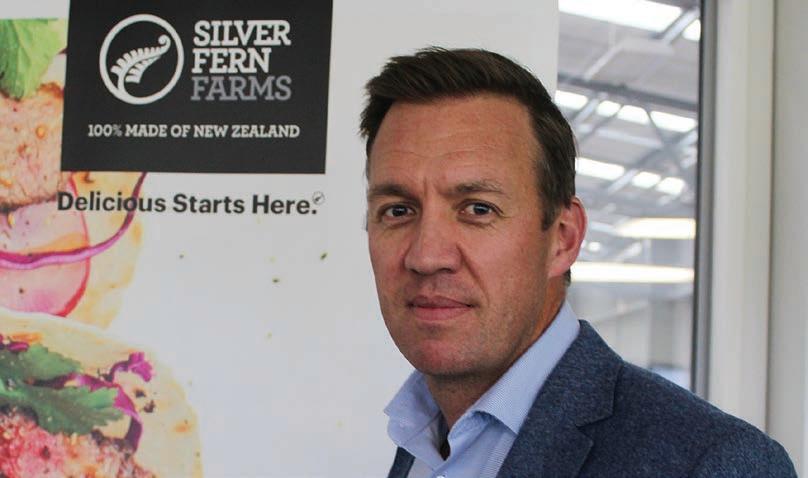
SFF Co-op, the farmer-owners’ investment arm.
The co-operative recorded a $10.7m loss after tax, having last year reported an $94.1m profit.
SFF Ltd chief executive Dan Boulton said challenging market conditions persisted throughout last year and have continued into the current year accentuated by competing beef and lamb.
“This has added more volume to already high in-market inventory
levels and put downward pressure on pricing,” he said.
In response the company has adjusted the pace of planned investment and focused on reducing operating costs.
“Some technology programmes that were in progress will be finished, however the timing of some larger projects has been deferred until our spending envelope increases,” he said. Boulton said in an interview
that had SFF not embarked on its market-led strategy five years ago, the size of the loss would have been greater.
“If we were fully exposed to the commodity cycle and traders and had not invested in the end consumers, then the result would have worse. We have some protection from creating incremental value but we need to go after it faster.”
The industry did not experience the labour shortages of the past few years and the $70m invested in plants last year has improved efficiency and performance.
That was part of $106m of capital expenditure last year, but Boulton could not say what would be spent this year as it will be determined by market strength and income.
Prices for beef and lamb fell sharply last year, and while market prospects remain tough, returns for beef are likely to improve in the middle of the year due to demand from the United States, but sheepmeat returns could stay flat for the remainder of this year.
Venison prices are likely to stay
unchanged. About 55% of SFF’s throughput is beef and about 45% sheepmeat.
The company’s balance sheet is strong after five years of favourable trading and Boulton said the company remains confident in its market-led strategy.
If we were fully exposed to the commodity cycle and traders and had not invested in the end consumers, then the result would have worse.
Dan BoultonCo-op chairman Rob Hewett said after several years of strong performance and record returns to shareholders, it is disappointing not to receive a dividend.
He is confident in the operating company’s ability to recover when market conditions become more favourable.

CANTERBURY farmers will be the first to have the opportunity to sign up for fertiliser from independent Australian company Marnco as it unloads its first consignment of superphosphate and DAP at its Timaru site.
Almost 25,000 tonnes of Vietnamese-sourced superphosphate and DAP has been delivered in the company’s entry to the New Zealand market on the bulk freighter African Goshawk, delivering to the Timaru and Tauranga sites.
Marnco commercial manager
Jamie Thompson said the company is excited to be delivering to NZ for the first time, and farmer interest in the product has been high.
He said sales so far extend in value to seven figures.
“The product looks good. We can now validate ourselves in the market, that we have delivered on what we promised.
“This is a very high quality product, well granulated and with minimal dust. We think clients will be impressed with what we have to offer.”
He said the superphosphate is notable for its low cadmium level compared to most of the product sold in NZ.
 Julia Baynes, Sales and Marketing Manager, CRV
Julia Baynes, Sales and Marketing Manager, CRV
The company has established a presence in Australia over the past five years, claiming 20-25% of the Victorian-South Australian markets and selling 400,000t last year.
It enters the NZ market claiming it will be able to sell fertiliser 1015% below current rates.
Prospects of a price war with existing fertiliser companies Ballance and Ravensdown look to be heightened, with both companies releasing revised pricing for the super and DAP products in recent days.
Thompson is confident that if farmers chose to support the company, future shipments will be assured.
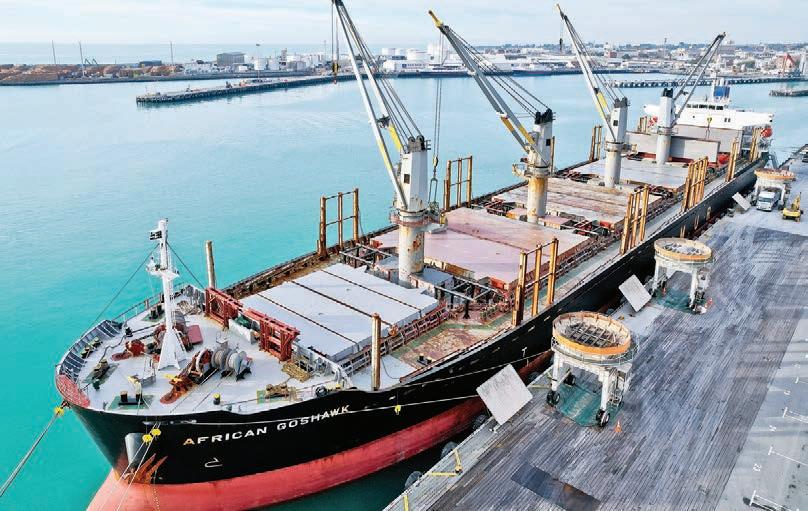


 Richard Rennie NEWS Governance
Richard Rennie NEWS Governance
BKate Acland is warning that a recent vote to not raise director’s fees will only increase the difficulty of recruiting future directors unable to afford or justify the time off farm that the role demands.
The BLNZ annual meeting last month saw the remit to increase directors’ fees from $38,000 a year to $45,000 a year and chair fee from $76,220 to $90,000 getting the thumbs-down from two-thirds of the 12% of farmers who voted.
In comparison, DairyNZ directors averaged $47,765 for the 2022-23 financial year. Chair Jim van der Poel received $95,740. BLNZ’s levy income for the September 2022 financial year was $30.4 million, compared to DairyNZ’s $67m.
DairyNZ’s total directors’ fee payments amounted to $582,000, compared to the $402,000 for BLNZ.
Another key industry comparison group is Federated Farmers.
Farmers Weekly understands Feds directors are paid $45,000 plus a recent 6% increase, while the chair is paid $90,000 plus the 6% increase.
Acland said the decision to not pass the remit did not solve the gap between BLNZ and other primary sector industry bodies, and will still need to be addressed in future.
She said the move to increase directors’ fees was the result of an independent remuneration committee review, headed up by respected farmer and director Murray Donald.
“It was an independent
recommendation. Possibly if the board had done the analysis ourselves, we would not have been so bold to suggest an increase of such magnitude.”
While it was a significant increase, she said it would only have brought BLNZ into line with other industry groups, and came after only one earlier, small, fee increase.
When
you
look at the commitment and workload of the role off the farm, it is a lot.Kate Acland BLNZ Chair
“When you look at the commitment and workload of the role off the farm, it is a lot.
“One director kept a log of their hours, and it is 500-600 a year. I personally have spent 90 days off the farm. You only need to miss one or two key decision-making points on farm and it will cost you.”
She cited her own example, where she was fortunate enough to have her husband at home to make the call to offload lambs over the dry period and gain an additional 40 cents a kilogram.
“We really want to encourage the best director candidates and finances should not be a barrier to that.”
Survey work by the Institute for Directors and EY this year drew on feedback from 3950 directors across almost 1700 organisations to provide insights to what directors are earning in New Zealand.
The survey found both notfor-profit organisations and commercial company directors have averaged a 3.9% increase
in fees, with the primary sector averaging 7% increases.
The average not-for-profit directors’ fee is $34,148 a year, with the average chair fee $49,558.
The need for farmer engagement with BLNZ has never been greater, with a low 12% turnout voting this year, and ongoing difficulties attracting a broad range of quality candidates for board positions.
Acland cited the DairyNZ director elections that attracted 13 candidates for two seats, compared to BLNZ attracting only three candidates for two seats, with only two of them being farmers.
“There is a perception there the Feds do it for free. They do not, and nor should they.
“As farmers we really need to value the job done, regardless of

whether it is Feds, dairy, or beef and lamb.”
A spokesperson for the Institute for Directors said the not-forprofit sector can be complex and challenging, with many organisations operating in size and scale on par with large commercial organisations, yet facing more scrutiny from society
relating to overhead costs.
He said remuneration for board members needs to be set at a level acknowledging responsibilities and risks, and to attract, motivate and retain members with the ability and character necessary to conduct the critical and demanding functions of being a director.

PĀMU has passed its use-by date, and selling the state-owned company could boost government coffers by $2 billion.
That’s the view of Canterburybased specialist agricultural chartered accountant Pita Alexander, who is suggesting the government sell Pāmu’s assets to New Zealand farmers or local private investors.
Alexander said the sale of Pāmu could potentially boost government finances by $2bn.
Just last month, Minister for State-Owned Enterprises Paul Goldsmith told Pāmu the company needed to lift its game, though he said selling the company was not on the government’s agenda. Pāmu runs 110 farms across NZ with a mix of dairy, sheep and beef,
We’re excited to launch the Level 4 Farm Environment Planning micro-credential which now offers staff the ability to choose how they wish to undertake our environmental training.
Plus, for those who are working towards accreditation with the NZFAP Plus Programme, this micro-credential covers a number of the standards required within the environment module. And in 2024, domestic learners are also eligible for 50% off* fees. *Terms
deer and forestry. In its day Pāmu farms – what were then known as Landcorp farms – were fit for purpose; right now, they’re not, Alexander said.
“They own 83 farms, manage another 27, totaling 358,866 hectares.
“If the private sector owned these farms, they would operate them more efficiently than Pāmu.
“It has often been suggested that it acts for a lot of industry good, and it has done in the past, and it maybe still will, but that’s not a good enough answer for the government, which has $2bn involved,” Alexander said.
“There is no question that their financial results for some years have been disappointing and considering that NZ taxpayers have just on $1.85bn invested here, the return over the years has in the main been very poor.
“With a for-profit business, there
is no structure that will compete with private enterprise that would operate the Pāmu farming assets much more soundly and efficiently.”
“If the government ever needed $2bn to spend in better areas, now would be the time.
“How have they lasted this long – their industry good talk has been good, but their very low debt servicing has been the real key.
“Pāmu has passed its use-by date and passed its original purpose.”
Alexander suggested a gradual sell-down on a piecemeal basis.
The phased exit strategy could take up to 10 years, he said.
“The present structure has good intentions, good bones, but has not been fit for purpose really for many years.
“New Zealanders, as a rule, do not like selling public assets, but sometimes this action is a nobrainer, and this is one of them.”
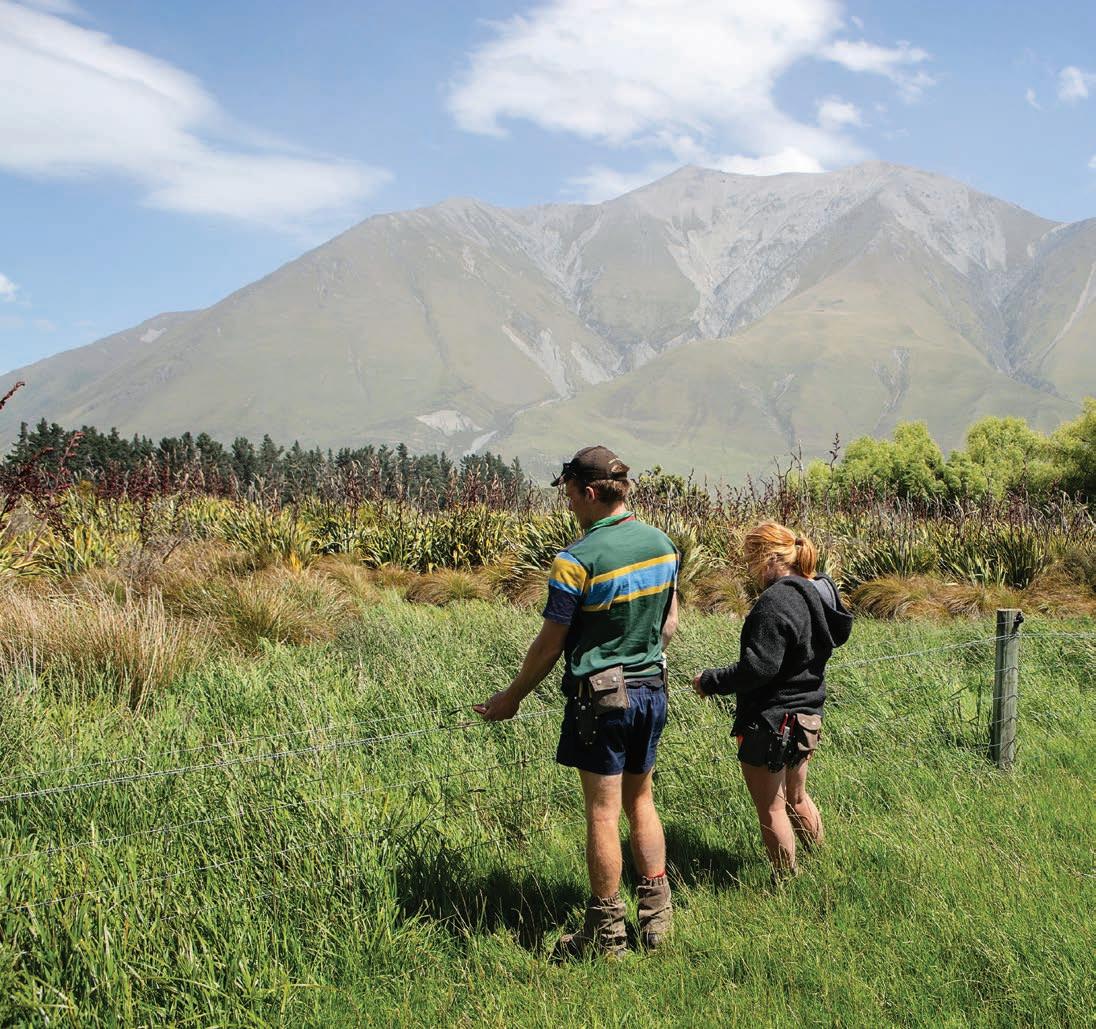




LIQUIDATORS say an unnamed party is close to purchasing Home Farm, part of the former Taratahi Agricultural Training Centre near Masterton, which was placed in liquidation in 2018. In its latest report, Grant Thornton says if the deal is completed, it will satisfy the government’s requirement that Home Farm continue to be a centre for the delivery of education.




“While discussions have been positive and we have been informed they have approval to sign the agreement, we continue to wait to receive the signed agreement,” the liquidator’s report says.
“The party has continued to undertake further due diligence on the property and has expressed an expectation to complete a sale.
“Once the signed sale and purchase agreement has been received, we will present this to the Minister of Agriculture for his approval of the sale.”
The liquidator continues to operate Taratahi’s Home Dairy Farm in Wairarapa and the dairy, sheep and beef farms at Telford in South Otago as going concerns.
“This strategy will be continued until the ownership of the Home Campus and dairy farm have been resolved in order to maximise returns to creditors.”
Since 2019 the liquidators have had a formal agreement with the Southern Institute of Technology (SIT) to provide education from the Telford Campus.
“We continue to work with SIT to make the Telford Farm available to assist in the education of its students.”
They have had discussions with the Tertiary Education Commission and Ministry for Primary Industries on the future of the Telford farms.
“It is our intention that following the settlement of any sale at the Home Campus we would look to transition our operation of the Telford Farms to an agreed party.”
Taratahi was placed in liquidation in late 2018 when it was determined there were 1194 unsecured creditor claims totalling $15.9 million.
The liquidators say that to date it has received 248 unsecured creditors’ claims totalling $15.2m.
All employee preferential entitlements have been paid but the Inland Revenue Department is still owed pre-liquidation payroll taxes, which have preferential status.

GLOBAL Dairy Trade prices had a broadbased bounce-back in the latest auction, the index rising 2.8% after two events in which it fell by similar amounts.
Cheddar and whole milk powder led the way, increasing by 4.1% and 3.4% respectively.


Prices for anhydrous milk fat, butter and skim milk powder also rose; only butter milk powder and lactose fell.
The latest 2.8% rise in the GDT index means that the dairy commodities market has lifted by 27.5% since last August, despite two recent falls totalling 5%.
Chinese buyers have returned to the market along with those from the Middle East, dairy analysts say.
“WMP has found a near-term price floor following two weak results in March,” NZX analyst Lewis Hoggard said.
Westpac chief economist Kelly Eckhold pointed out that European buyers took their largest proportion of sales since 2021 and that may indicate some milk production softness at home.
The rebound in WMP prices reduced some of the modest downside risk to the Westpac milk price forecast of $7.90, he said.
PGG Wrightson has put governance issues behind it and is re-focused on delivering the earnings guidance and restoring dividend sustainability, chair Garry Moore says.
The directors want to support senior management and PGW’s 1800 employees in getting on with the business of serving rural people and their needs, without any distraction at board level.
“Times are difficult for farmers and our trading figures reflect that, but there are some green shoots like kiwifruit and apples,” Moore said.
“On-farm financial figures are some of the worst for several decades and the drought conditions in many areas are weighing heavily on farming families.
“That is where our focus has to be – in helping our customers wherever we can.”
Having joined the board as an independent director in 2022, Moore was elected chair on February 16 after majority shareholder Agria Corporation gave notice of proposals to replace three directors with four of its own appointees.
Agria has since withdrawn that disruptive action and its request for a special general meeting.
Moore has a rural background in Mid-Canterbury and a long investment advisory history with the Christchurch branch of Forsyth Barr.
He said recently that all PGW directors should have an appropriate balance of expertise, skills and independence.
With 44% shareholding, Agria has nominated U Kean Seng, based in Singapore, and Meng Foon, the former race relations commissioner and Gisborne mayor.
On-farm financial figures are some of the worst for several decades and the drought conditions in many areas are weighing heavily on farming families.Garry Moore PGG Wrightson
Moore thinks the right board size is six directors, not the five currently, and that matter will be addressed by the next board meeting in May.
“I think we all agree that Agria should have its appropriate weighting on the board with a couple of representatives,” he said.
“We believe that having an
independent, NZ-based chair is a positive,” the directors said after replacing acting chair U Kean Seng.
Elders Australia has grown to a 12.5% shareholding in PGW and has said it is following a geographical strategy.
“We see them as friendly and complementary, especially in procurement matters.”
The PGW share price fell $2 in the past 12 months, $1 of that in the month-long period of Agria aggravation.
After Agria withdrew its action on March 22 the share price rose 15c to $2.20 presently.
Moore said the decline in the share price was a natural market reaction and can be recovered as PGW regains its momentum.
The suspension of dividend payments can be reversed with good cashflow management and the end of the current capitalintensive IT transition.
“When the market sees stability and guidance achievement, a lot of confidence will be restored.”
Moore said the network of nationwide premises is stable and good for business and that young people continue to be recruited into the company.
Saleyards and wool auction rooms are being supplanted with electronic sales channels.


INVESTMENT in world class research that will create new and innovative uses for New Zealand strong wool is making meaningful progress.
As the specialist funder of postharvest research, development and information transfer for the New Zealand wool industry, the Wool Research Organisation of NZ (WRONZ) it is acutely aware of the need for innovative solutions, alongside stabilising traditional markets.
“Only then will the wool price have a chance to recover,” WRONZ chair and North Canterbury sheep and beef farmer Andy Fox said.
“It is frustrating to see the continuing weak strong wool prices and with the situation compounded by the recent decline in sheep meat pricing, many farmers across the country will struggle to break even this year.
“We all know the story. The strong wool sector has faced increasing competition from synthetic fibres since the 1960s, and especially in the last 20 years.
“At the same time, we’ve seen a significant decline in sheep numbers and the amount of wool produced.”
Despite genuine intentions, the wool industry has also seen the ambitions of many ventures
remain unfulfilled over the years.
Fox said while there are encouraging signals that demand for natural sustainable products will prompt a return to wool, this has yet to translate into a recovery of the wool price.
“It’s meant many farmers are wary of promises, pledges and plans to fix the sector.”
That’s why, he said, WRONZ is investing in world-class research that will create new and innovative uses for NZ strong wool.
“We’ve been determined to walk the talk and deliver tangible outcomes for growers and the sector.
“And we’re making meaningful progress,” Fox said.
Under the New Uses programme, WRONZ has been able to deconstruct strong wool to a cellular level to create new products in particles, powders, pigments and cortex.
These retain the performance benefits of wool in a wide range of applications from personal care to printing.
The programme has recently made a significant technical breakthrough in the pigments field that could lead to the opening of very large market sectors that had not previously been anticipated.
“We’re not yet in a position to share any more details on this development due to commercial sensitivity and the need to protect

intellectual property, but we believe it is ground-breaking,” Fox said.
In parallel, WRONZ is exploring what options exist for it to leverage its IP to benefit the NZ wool industry.
This includes exploring the development and operation of a mid-sized production facility.
“An independent analysis highlights a good commercial opportunity that we are determined to leverage as quickly as possible for the benefit of the wider sector and in particular growers.
“Once we’ve proven the initial production plant, we can quickly move to a bigger production facility with this larger facility having the ability to make a significant positive change in the wool industry.
“While it’s tough out there for farmers, we believe these developments offer some light at the end of the tunnel.”
Fox said WRONZ is dedicated to finding markets and opportunities that will return the most value for growers, lift the price of wool at the farm gate, and capture as much margin as possible within NZ.
“We remain focused on doing everything we can to play our part in helping turn around the sector’s fortunes.”
Meanwhile WRONZ-backed Wool Source is hitting its stride.
Wool Source was founded by
WRONZ in 2021 and tasked with commercialising and launching new uses for NZ strong wool.
Wool Source reports an “incredible response” from the different sectors and industries it has been introducing to the new wool-derived powder, pigments and particle products.
The value proposition wool offers is as diverse as personal care and cosmetics to ink and coatings.
“We’re selling product, we’ve got multiple product development projects underway with international brands and a significant opportunity is opening for our Wool Source Pigments in the inkjet printing market,” Wool Source chief executive Tom Hooper said.
“We are crystal clear that our mandate is the WRONZ mandate, to maximise the returns of growers.
“We are looking for volume sales opportunities for our products and access to our IP and technology is conditional on customers using NZ strong wool.
“This puts us in a different position to a commercial entity looking to maximise their own profitability or short-term returns.
“There is momentum gathering with a lot of irons in a lot of fires.
“Product adaptation of new and novel technology is not an overnight endeavour but I’m feeling positive and excited by the opportunities ahead,” Hooper said.
 Gerald Piddock NEWS Animal welfare
Gerald Piddock NEWS Animal welfare
ANEW report has highlighted the vast amount of animal products entering New Zealand that are produced in ways that are illegal under New Zealand’s own animal welfare laws.
Titled Closing the Welfare Gap: Why New Zealand Must Apply Its Animal Protection Standards to Imports, it reveals that these imports include battery cages for egg-laying hens, sow stalls for pregnant pigs, and the mulesing of sheep.
All of these practices have been banned in NZ due to animal welfare concerns. It recommends that NZ extend its animal protection laws to cover all products placed on the NZ market, regardless of origin.
Not only is this supported by public expectations, it is permitted under World Trade Organisation rules to protect public morals, it says.
The report was launched by Animal Policy International, the SPCA and the NZ Animal Law Association at an event in Parliament hosted by Green Party MP Steve Abel. He said Kiwis have serious
Advertising Promotion
concerns about the welfare of farmed animals, with over 80% of people believing imports should respect NZ law.
“In the longer term it is unsustainable not to apply welfare standards to all products placed on the market. Otherwise, instead of improving the welfare of animals, as demanded by New Zealanders, the production is simply shifting to countries where there are little or no standards.”
The report found:
• Over 90% of pork comes from countries that allow sow stalls and farrowing crates. NZ banned sow stalls in 2016, and the government has passed regulations phasing out farrowing crates by 2025.
• All of the wool imported in 2022 came from Australia, where mulesing remains common. In NZ performing mulesing can result in a criminal conviction.
• Over 80% of liquid egg imports in 2022 came from China and Australia, where egg-laying hens can be kept in battery cages. NZ’s ban came into force in 2023.
• Over 70% of imported fish comes from Thailand, China, Australia and Vietnam – all countries with no welfare standards around slaughter. NZ has a Code of Welfare that concerns aquatic animals at the time of slaughter.
NZ is importing animal products

RULES:
There’s a clear disconnect between our laws and imports. Animals overseas are being kept in conditions that New Zealanders have already clearly rejected.
Arnja Dale SPCAthat undermine the standards that we are holding NZ farmers to and wanting them to aspire to.
Extending animal welfare laws
could level the playing field for NZ farmers, who are currently competing against cheaper imports produced to weaker standards, as seen with the NZ pork industry with already around 60% of pork imported.
Future free trade agreements, such as with India, may further open NZ’s market for low-welfare imports.
NZ Pork chief executive Brent Kleiss backed the report’s findings, saying they align with what his organisation has been advocating for some time.
While recognising that the government has a balancing act
As stewards and kaitiaki, farmers have worked to get the best out of their land for generations.
Now, with growing resource constraints and as we face the transition to a low-emitting economy, we all need to be thinking about how we can become more productive while also future-proofing our businesses.
New Zealand’s productivity lags behind other countries and as a result we work longer to make up for low capital investment.
To improve living standards and set us up for the future, we need to lift productivity performance across the board.
According to new research commissioned by ASB, business holds the key to boosting productivity.
Through its considered and sustainable practices, New Zealand’s world-renowned food and fibre sector not only feeds and clothes the nation – it is the backbone of our economy.
And, our premium-quality food and drink products are valued the world over, with more than half the food we produce delivered to millions of people in more than 140 countries.
We are working closely with our rural customers to help them understand the potential opportunities and efficiencies that can be made.
This is not just a box ticking exercise. Improvements in environmental and social output can lead to a business operating more efficiently, reduced emissions and better financial performance.
Agri-tech innovations are already geared towards better production for better financial performance. Technology can also help farmers to adapt to the changing environment and maintain profitability with a reduced environmental footprint. Plus, it can help to meet modern consumer demands, and enable premium pricing.
We’re supporting our rural customers to adopt technology to smooth out the end-to-end running of a farm and improve quality of life for farmers.
From back-office tools and technology, to improved water supply or effluent systems, automatic pickers, or cow collars and farm management software, there is a range of technology available that can improve on-farm performance.
And there’s a lot we can learn from each other too. ASB’s research highlights the effectiveness of collaboration and knowledge transfer in other countries to drive innovation and export growth.
when it comes to trade talks, he believes more could be done to advocate for a higher standard of animal products coming into NZ.
“The points in the report show there is a possible pathway to do it and maybe it should be more seriously considered.
“We import pork from 22 countries and those countries –they are providing pork that’s been raised to lower standards of care than what we expect of our own producers.”
There are few precedents around animal welfare standards being brought into trade agreements, but Kleiss believes this, along with public sentiment, has changed.
If the public wants farmers to succeed in the standards expected of food production, there has to be a level playing field when it comes to imports, he said.
SPCA chief scientific officer Arnja Dale called the findings “extremely concerning”.
“There’s a clear disconnect between our laws and imports. Animals overseas are being kept in conditions that New Zealanders have already clearly rejected, and yet products from those conditions continue to be sold to New Zealand consumers.
“The new government has an opportunity to close the welfare gap by extending animal welfare regulations to imports.”

As farmers, we aren’t competing against each other, and that makes our sector both special and also more readily available to share knowledge.
We all need to adopt a curious mindset and get comfortable with the cycle of innovation, learning and sharing for us all to benefit.
ASB has the experts to help support productivity and on-farm performance to ease the transition that’s already underway and ultimately enable a more productive sector that capitalises on the opportunities ahead. We back the sector and are here to support its continued success.
The rural sector’s strong sustainability track record, world-class products and increasing consumer demand, means it is well placed to become more productive. This is what we need to do to create more opportunities and choices for future generations of New Zealanders.
To read the full report, visit: asb.co.nz/productivity
 Richard Rennie in Victoria TECHNOLOGY Soil
Richard Rennie in Victoria TECHNOLOGY Soil
DESPITE a multitude of machines available to aerate, cultivate, plough and rip the soil, east Victorian beef farmer Niels Olsen struggled to find one that did the job he needed doing on his 200 hectare property.
But rather than just getting by with something that was less than ideal, he opted to build his own. That was over a decade ago, and
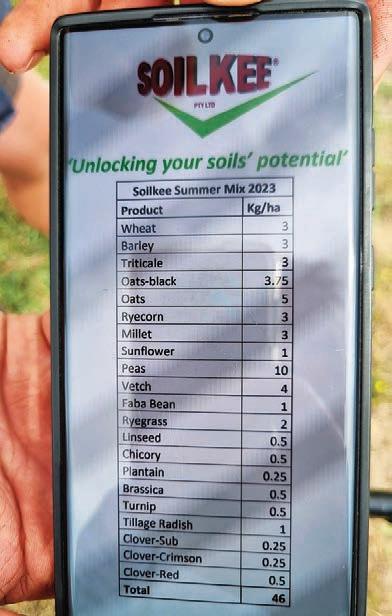
today there are over 100 Soilkee soil renovators forming part of the kit for pastoral farmers across Australia, the United States and, soon, New Zealand.
“What I was looking for was a machine that could encourage more feed growth in the paddock. We wanted to plant a maize crop in our pasture, grow it for six weeks and then feed it to the dairy cows we were grazing at the time.”
After trying “every different seeder under the sun” he found the existing pasture would ultimately take over the maize he planted into it.
He realised he needed a machine that would maintain 80% of the pasture while also allowing the maize to be sown in a manner that would give it a chance to emerge, and be competitive with the pasture.
Experimenting with a variety of different cultivation blades, he knew he had hit on the right design when he noticed a deep green streak of successfully emerging crop after trialling a prototype.
“We realised then we were onto something. Today the Soilkee is patented in 40 countries around the world.”
Over time and with trialling working alongside his sons Shane, Jamie and Sean, he found multiple pasture species could be planted into existing pasture, topping up the perennial pasture whose persistence can be an issue under Australia’s hot conditions.
“We have got to the point where we are really increasing the functionality and recycling of nutrients in the soil, rapidly rebuilding carbon, and holding onto that extra moisture as well.”
Today the farm’s sward profile is a “who’s who” of pasture species, including plants as diverse as wheat, oats, peas, vetch, linseed, chicory, plantain, brassicas and even sunflowers.
“It can handle up to 20 species planted at the same time.”
The machine’s blades provide a variation in the cultivated soil environment to suit the wide range of seed sizes planted, including zones of semi-disturbed, disturbed and undisturbed soil.
The resulting pasture sward viewed in mid-March is a dense mix of those species being breakfed off to Olsen’s Angus cattle daily, with sunflowers proving particularly popular with the young steers.
Today the machines are built on the farm with Shane overseeing. Independent trials using the machine have just kicked off in Queensland, funded through the state’s drought resilience package.
For Niels, the machine has also delivered carbon gain benefits that have been more of a welcome bonus than the intention of a farmer who initially set out simply to grow more feed.
“We did an initial proof of concept trial with Commercialisation Australia.
“In the first couple of years
 Suz Bremner MARKETS Livestock
Suz Bremner MARKETS Livestock
THE boner cow market is heating up as autumn calving gets going, and Temuka is the major outlet for this class of cattle in the South Island.
Most of these cows have a oneway ticket to the processors and though schedules have held up to date, the extra supply has meant that schedules are starting to be pulled back.
That would typically have a flowon effect to the yards as lower schedules and larger supply puts pressure on auction prices, but
that wolf waited at the gates of the Temuka saleyards for another week at least.
Despite a short week and some noted buyers missing, the boner cow sale at Temuka on Tuesday, April 2 was firm on the previous week, and in line with the previous year. Over 500 cows were offered and most were Friesian, and Friesian-cross.
The Friesian cow average lifted 8c/kg to $1.47/kg, complemented by a 15kg increase in the average weight. An additional 10c/kg was paid on the top end for Friesian, which weighed in at 554kg.
Crossbred and Jersey cows also lifted 4-10c/kg, which meant most

sold for $1.40-$1.50/kg. On a whole, close to the entire yarding of boner cows traded from $1.40/ kg to $1.54/kg and most weighed 430-645kg.
Values are steady to slightly up on last year, which reflects a stronger schedule.
The increase in cow volume coincides with the annual beef calf sales at Temuka, making March and April the busiest months of the year at those yards.
For more market insights, browse the range of AgriHQ’s livestock reports. Tailor a subscription to suit your needs at www.agrihq.co.nz/livestock-reports

we were getting 11.7-12 carbon credits per hectare per year. Seveneight years in, it is coming up at 26-27 credits per hectare, which is about six tonnes of carbon increase on a hectare.”
Today the income from carbon credits earned is valuable.
“Doing the beef plus carbon credits, each are about the same income amount, which is better than what we would get dairying.”
With NZ’s focus on pasture, Niels sees increasing opportunity for the machine to help maintain or even lift levels across the Tasman.
“I was surprised to see NZ
We realised then we were onto something. Today the Soilkee is patented in 40 countries around the world.
getting rid of farms and planting pine trees. We see plenty of potential in building more into the soil’s carbon, and keeping farmers farming.”







 Richard Rennie NEWS Apiculture
Richard Rennie NEWS Apiculture
VARROA continues to gnaw into national hive health and beekeeper wellbeing, with the latest Manaaki Whenua Landcare Research survey finding the mite contributed to almost half last winter’s hive losses.
The agency’s colony loss survey provides a snapshot of national hive health, and its results are based on responses from about 40% of New Zealand’s beekeepers.
For the first time the survey also surveyed for autumn hive losses, reported at 16.8%, compared to the 12.7% losses suffered over winter.
The increase in varroa comes as the mite’s resistance to chemical treatment continues to grow.
Manaaki Whenua Landcare Research surveyAlso for the first time, the survey took a snapshot of beekeeper wellbeing, and highlighted the mite’s broader impact on the industry.
The survey questioned hobbyist beekeepers and commercial operators about their wellbeing, using a national standard

wellbeing score.
Hobbyist beekeepers are reportedly thriving, while commercial operators are struggling, and have wellbeing lower than the rest of the primary sector producers and the general population.
While concerning, the surveyed hive losses sit below the results of 2021 and 2022 –thought they are still higher than those of 2015 and 2020.
In 2022 colony hive loss rates were 13.5%. Varroa’s impact on losses has been steadily increasing since it was first discovered over two decades ago.
In the latest survey it has contributed to 50% of hive losses, compared to only a 12% contribution seven years ago.
Other than varroa, beekeepers reported problems with queen populations and suspected starvation within hives as problems over both winter and autumn. The autumn losses were chalked up largely to the devastating impact of Cyclone Gabrielle down the east coast wiping out significant numbers of hives.
Three-quarters of beekeepers surveyed described their varroa pesticide treatment as “mostly successful” or “completely successful”, but all the treatments used were perceived by them as being less successful than in the previous survey.
The increase in varroa comes as the mite’s resistance to chemical treatment continues to grow.






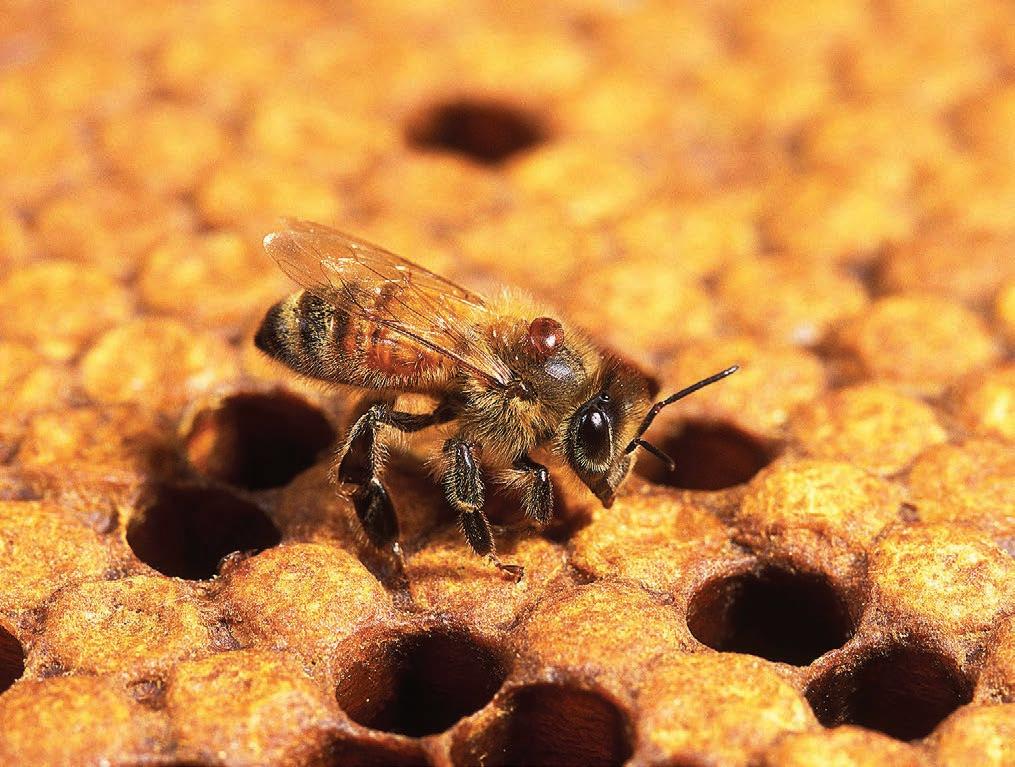
Work by Manaaki Whenua Landcare Research released earlier this year highlighted that varroa mites were developing a unique resistance to flumethrin, the main insecticide used.
It is one of only two compounds effective against varroa.
The reported losses were higher in the North Island than South.
The survey also took a look at what constitutes a “typical” NZ beekeeper: reportedly a male in his late 50s, most likely a first-generation beekeeper with three hives and five years of experience.
 Neal Wallace NEWS Water
Neal Wallace NEWS Water
OWNERS of dams up to 4m high will no longer require an engineer’s report on the potential impact should they fail.
Chris Penk, the Minister for Building and Construction, said regulations introduced by the previous government requiring an engineer’s report on the safety of dams 1m high and above, were to come into force from mid-May.
This has been amended by the coalition government, and a new threshold above which an engineer must complete a safety report has been set at 4m.
Federated Farmers has welcomed the change, but board member Mark Hooper said it could have gone further.
The government claims the change will exempt 1900 dams but the lobby group estimates about 800 dams, many on farms, will still be captured by the regulations.
Hooper said they lobbied for a system where an assessment by a lower qualified
consultant could be made on the potential impact and threat of a dam failure, excluding the need for an engineer’s report.
He said some dams that still meet this new threshold pose no threat to life or property, and with only about a dozen engineers in the country qualified to do dam assessments, those reports are going to be time consuming and costly.
“If a dam is captured the only option is to go to a specialist engineer.”
Penk said the change will exempt 1900 dams and save owners $13.3m in compliance costs.
The changes align dam safety regulations with the requirement for dams over 4m to also have a building consent.
“This higher threshold strikes the right balance of managing risk while easing the regulatory burden faced by owners of smaller dams like farmers and growers.”
The new regulations come in to force on May 13 and Penk said owners of classifiable dams must provide their relevant regional authority with a dam classification certificate by August 13.

 Neal Wallace MARKETS Sustainability
Neal Wallace MARKETS Sustainability
CHINA’S consumers have typically made purchasing decisions based on what is good for them and not what is good for the environment, but a new report says that is changing.
A report, The Green Dragon: Sustainability in the China market, by the NZ ConsulateGeneral in Shanghai, says sustainability credentials and messaging can help brands command higher premiums, especially when linked to claims of health outcomes.
Surveys regularly show that China’s consumers rate health benefits as the top consideration for their purchases followed by the quality and safety of a product.
“This requires companies to position how they incorporate sustainability into their marketing, less of ‘it is made naturally so it does not harm the planet’ and more of ‘it is made naturally so it is good for you’.”
Claiming a product is eco-friendly is no longer sufficient as consumers need to see a link between environmental credentials and health benefits that is supported by science and innovation. The authors note some dairy brands promote the quality and benefits of grass-fed cows in China because customers perceive that farming system to be close to organic.
Chinese importers recognise NZ’s track record in naturalness and biodiversity management as a point of difference.
Green Dragon report
Others leverage other environmentrelated attributes, such as being carbon zero, all natural ingredients, biodegradability, and being chemical free.
Unlike Western multinationals, Chinese food and beverage importers are not yet prepared to pay premium prices for low greenhouse gas emission products, the report says.
If that happens, NZ is well-positioned. “Chinese importers recognise NZ’s track record in naturalness and biodiversity management as a point of difference for them in their premium NZ-sourced product lines.”
China has a top-down approach to environmental regulation, which can quickly change companies’ behaviour, evident by the speed of expansion of renewable energy, electric vehicles, reducing waste and excess packaging and improving resource management.
Investment in solar and wind energy is five years ahead of schedule and the 8.5 million target for new electric vehicles has also been easily exceeded.
In Shanghai alone 327,000 new electric vehicles were registered in 2022.
But China’s government-driven compliance approach to environmental management is not necessarily resulting in intrinsic changes to consumers’ attitudes to the environment, but that is changing.
“There are, however, signs that younger Chinese consumers are caring more about sustainability, in that they are concerned about their own health and welfare, with an embedded expectation within this that higher environmental standards are being met.”
While NZ has a natural advantage in
sustainability claims, other exporters are burnishing their green credentials and telling their green stories effectively.
Linking sustainability to value is an opportunity for NZ businesses to leverage and move products and services up in value and closer to the consumer.
“Showing a clear link between sustainability, science and innovation, and better health outcomes it is important in order for marketing to resonate loudly with the broader group of Chinese consumers.”









Laming is a director of NZAB with 22 years’ experience in the agribusiness and advisory industry.
NEW Zealand has been through and continues to experience a period of pretty ugly inflation.
It impacted all sectors of our economy but farming felt it more keenly, being exposed to some big increases in wages, fertiliser and fuel.
So what does a “good” milk payout look like now, given the inflationary changes?
We think it is useful to look at graphs showing the difference between inflation- and noninflation-adjusted payouts over the past 20 years.
This will help farmers making investment decisions and considering hedging their milk prices.
First up is the nominal milk
payout from Fonterra, not including dividends, since 2003.
Nominal is just that, being the actual payout that year unadjusted for inflation.
We have added two lines:
• The rolling five-year average in blue, including this year’s current forecast of $7.80, which is currently $8.08.
• The rolling 10-year average in green, currently $6.80.
Both lines are trending up, which is obviously good, and this season’s $7.80 would be the fourth-highest nominal payout of all time.
But given we have ongoing inflation, what does it look like historically adjusted for inflation all of the past 20 years of payout?
Look at the next graph (below left), which now expresses each payout year in 2024 dollars, according to CPI inflation.
This is where it gets super interesting.
When we line up our current $7.80 against this data, the fourth-

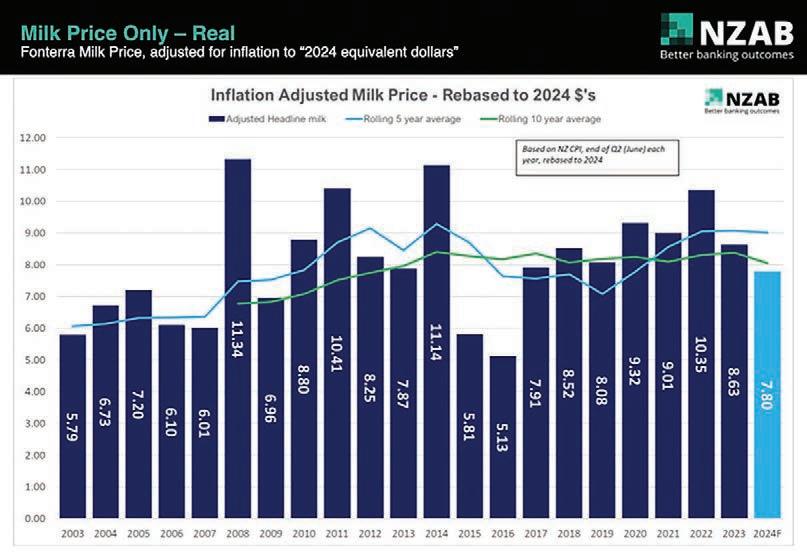
best payout drops to 14th place.
And what becomes “average” in these inflation-adjusted payouts?
Including this year, the fiveyear average is $9.02 (blue line) and the 10-year average is $8.06 (green line) in 2024 dollars.
Another way of putting this: if this year’s payout nudges up to $8, it will be only average for the past 10 years when adjusted for inflation.
But in the context of the past five years, it looks a little underwhelming, being behind by over $1 the average of $9.02.
If we took the inflation-adjusted average over the entire 20 years (all the data), this would be $8.23.
If you decided to ignore the extreme market dynamics caused by increased world milk supply that occurred in 2015/2016, the five-year average has been consistently around $9 in 2024-dollar terms since 2011.
However, if you thought that this volatility was going to be an ongoing feature of the market, then something around $8.25 would be your average.
Either way, we start to get a relatively tight range of $8-$9 that we can start using as “average” for investment and hedging planning.
On this basis alone, the current year of $7.80 would seem to be an underside outlier and where we started the season at $6.75 certainly was.
Furthermore, if an average of $8.50 was put into every dairy farmer’s budget this year, most would be continuing to enjoy a very sound (without being spectacular) rate of return.
And importantly, given the inflation-adjusted average line is

ADJUSTED: Andrew Laming from NZAB has crunched the numbers for dairy payouts over the past 20 years, searching for what might be called ‘average’.
$8.32 over the past 10 years and $8.57 over the past 20 years.
If this year’s payout nudges up to $8, it will be only average for the past 10 years when adjusted for inflation.
level (and in the case of the past five years, increasing), this means that the New Zealand dairy payout is at least keeping track with inflation and arguably moving ahead.
The final graph of inflationadjusted Fonterra dividends, without milk payouts, shows some interesting rolling averages as well.
Putting the inflation-adjusted dividend together with milk payout, a fully shared Fonterra farmer has received averages of $9.25 over the past five years,
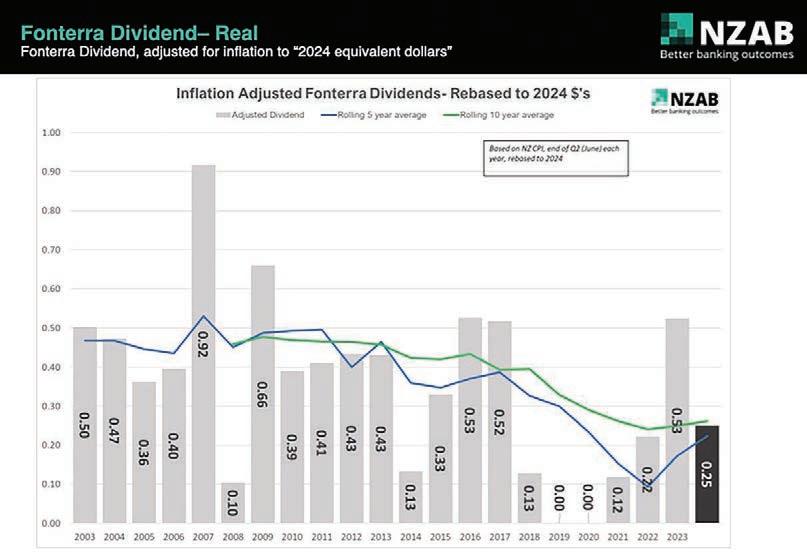
So how should we use this information and what are its limitations?
The overall CPI for the NZ economy does not equal the cost inflation for farming.
A better way to examine whether dairy farm returns are tracking with or ahead of inflation is to also take into account farm inflation as well. We will explore this in the future.
However, using some adjustment for inflation is better than not at all, particularly when we have been through some significant step changes in inflation in the past two or three years.
Using nominal data alone has risks. This inflation-adjusted data might help farmers form part of their decision making for what average might look like when assessing their investment strategy or putting in place hedging policy.
At the same time, it’s worth noting that farmers need to assess a multitude of factors beyond just payout when forming their own policies for risk management and investment decisions.
These other factors include debt leverage levels, regional climatic and production volatility, facility headroom and credit availability, balance sheet strength and liquidity, income diversity, shareholder risk appetite and operational leverage.
 Annette Scott PEOPLE Safety
Annette Scott PEOPLE Safety
SAFER Farms is calling on farmers to share their tips and tales on farm vehicle safety.
“It’s time to put the brakes on vehicle-related harm,” Safer Farms chair and Farm Without Harm ambassador Lindy Nelson said.
“We want to hear from those
who know farm vehicles best, the people driving them.
“We’re calling for first-hand and unfiltered accounts in farmers’ own words, sharing what they have learned from years of experience.
“We’re asking farmers to tell us about a close call or their views around farm vehicle safety.
“What are the key steps they’re taking to keep them or their people out of harm’s way on farm and what needs to change.”
Nelson said by farmers bringing relevant and practical knowledge and insights to the table, “we can start to design harm out of the system as a sector for good”.
Vehicles are almost always involved when someone dies as a result of a farm accident.
From 2019 to 2023, WorkSafe recorded 22 quad bike-related fatalities.
The majority involved rollovers with steep grades, with incorrect
driving position the leading cause.
Harm caused by vehicles and machinery is a priority focus in Safer Farms’ Farm Without Harm Strategy, the first whole-of-sector and whole systems approach to designing preventable harm out of New Zealand’s farming systems.
All stories and experiences submitted will go into a draw to win either a $500 Greenlea voucher thanks to FMG, or one of two $250 meat vouchers from
Alliance Group and Silver Fern Farms. Stories and experiences can be submitted via www. farmwithoutharm.org.nz by March 25.
The initiative is part-funded by Beef + Lamb NZ.
Hawke’s Bay farmer and BLNZ director Patrick Crawshaw is one farmer who has offered his take on farm vehicle health and safety in a video at www.farmwithoutharm. org.nz.
FISH & Game staff across the country are out of their offices catching and counting birds or kitting up in wetsuits to count fish.
Fish & Game New Zealand chief executive Corina Jordan spent two days recently helping the Taranaki and Wellington offices band mallard and grey ducks.
“It’s great to get away from computer screens and meetings, to get out in nature and get stuck in with the team doing valuable monitoring work as CEO of Fish & Game,” said Jordan, who helped band 500 birds.
“Every year we band about 3500 birds in Auckland and Waikato and a further 3000 in Taranaki and Wellington and a further 1800 in our eastern region.
“We’ve been banding waterfowl for more than 30 years because it’s important we have a good understanding of numbers and harvest rates so we can sustainably manage hunting.”
Birds are tempted with grain, and information about their age and sex is recorded when they are banded with a uniquely numbered band attached to their leg.
It’s great to get away from computer screens and meetings, to get out in nature and get stuck in with the team.
Corina Jordan Fish & GameUnlike their northern hemisphere counterparts, most New Zealand ducks don’t tend to travel more than 25km from where they were banded – but there have been instances where a few extremely tired mallards made it more than 2000km away, landing in New Caledonia and Vanuatu in the Pacific.
“We need hunters to report their bands so we can collect data on [the bird’s] age and where it’s travelled. This information is crucial to help us understand what is happening with waterfowl across the country so we can better manage the population for our licence holders.”
Fish & Game staff are also out drift-diving rivers to monitor trout populations.
The surveys determine overall trout abundance and set catch limits for anglers. The organisation monitors more than 100 rivers this way.
“We kit up in wetsuits and snorkels and glide down rivers, not only counting trout but also assessing water clarity and habitat, and aquatic insect life and noting indigenous fish abundance, which gives us a

broad picture of river health,” Jordan said. Many regions have information dating back over 30 years – the longest running data set of its kind in NZ. Because trout have the highest requirement for clean water of any freshwater species in the country, this can give valuable insight into the long-term trends of river health.
“No other organisation does more of this important type of monitoring of our waterways than Fish & Game,” Jordan said.


























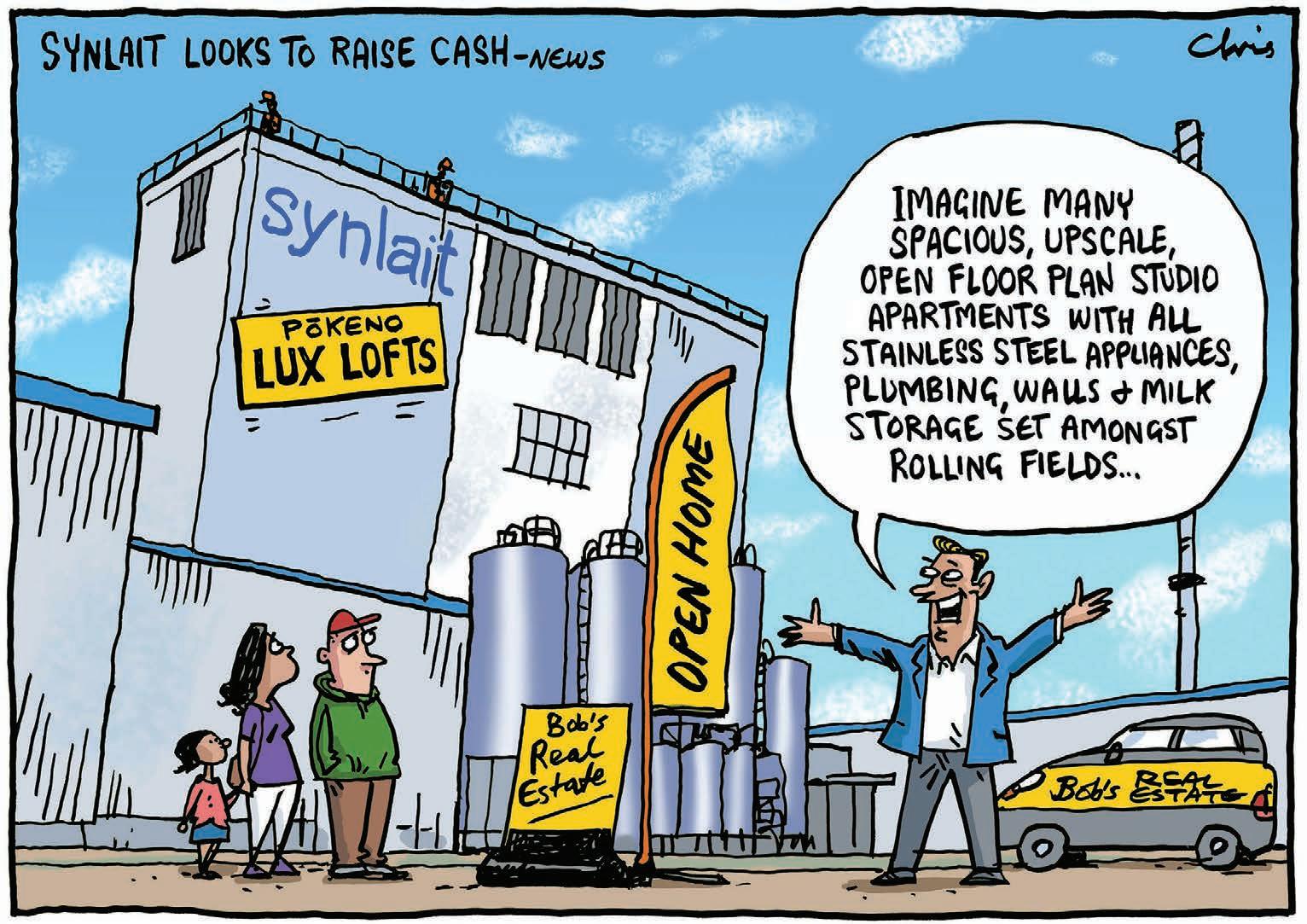
 Craig Page Deputy editor
Craig Page Deputy editor
THE buzz around the honey industry continues to be drowned out by the threat of varroa, more than two decades after the mite was first discovered in New Zealand.
The latest Manaaki Whenua Landcare Research survey revealed the mite contributed to almost half of last winter’s hive losses.
The survey gives a snapshot of national hive health, and results are based on responses from about 40% of NZ’s beekeepers.
But perhaps the real concern from the data is the growing stress and pressure beekeepers are under as they go about their jobs.
This is the first time the survey looked at beekeeper wellbeing, and it clearly showed that the mite is having a wider impact on the industry.
The pressure of trying to run a beekeeping business in tough times is taking its toll, as it is on others in the industry.
The survey questioned both hobbyist beekeepers and commercial operators about their wellbeing. Not surprisingly it showed hobbyist beekeepers – part-time beekeepers – are happy in their work.
But that was not the case for commercial operators, who are struggling and, according to the survey, have wellbeing lower than other primary sector producers and the general population.
There has been plenty said about the wellbeing of farmers in these tough times. In February it was reported that growing numbers of farmers and growers are seeking help from the Rural Support Trust as they grapple with weather events, compliance and economic pressures.
The trust received 2904 calls to its 0800 number last year, 1000 more than a year earlier.
But beekeepers have flown under the radar despite facing pressure from a drop in prices, growing regulatory demands and weather events. Sound familiar?
Varroa’s impact on hive losses has steadily increased since it was first discovered over two decades ago. This survey showed it contributed to 50% of hive losses, compared to only a 12% contribution seven years ago.
But it is not just varroa that is decimating hives – there are also problems with queen populations and suspected starvation in
hives. Then there are weather events, such as Cyclone Gabrielle, to contend with.
Earlier this year Farmers Weekly spoke to Wellington beekeeper Frank Lindsay after he was awarded a New Zealand Order of Merit award in the New Year’s honours.
The award was recognition of Lindsay’s more than 50 years of dedication to the bee industry – as a beekeeper, administrator, life member, disease expert and teacher.
Commercial operators have wellbeing lower than other primary sector producers and the general population.
Lindsay, who now runs about 60 hives in and around Wellington, said commercial beekeepers face plenty of adversity.
The industry has experienced tough times in recent years, as overseas markets were flooded with honey.
The “mānuka gold rush” attracted plenty of people to the industry in search of a quick dollar, but many have now moved on. Recently a beekeeper had to destroy 2000 hives after going bankrupt. No one wanted to buy the hives and they can’t be left sitting around without being looked after.
Lindsay might be an optimist, but he is adamant the good times will return for the industry. It’s just a matter of keeping faith and, most importantly, keeping an eye out for each other in tough times.
John
McOviney Palmerston NorthI REFER to “Three cheers for the long goodbye to SNAs” in Alan Emerson’s Alternative View (March 25).
I can only totally back up his thoughts regarding Significant Natural Areas and how they affect the New Zealand farming community.
I was contacted by my local council some five years ago whilst under the previous administration specifying the legislation bought in by the Labour / Green Government.
Their assessment was done totally by satellite mapping, concluding that the area needed to be protected [as it included] “indigenous vegetation, wetlands and habitat essential to maintain healthy populations of threatened plants and animals”. Map attached!
The area identified on my property had previously been grazed, prior to our ownership, but allowed to revert to bush, presumably because it was unprofitable at that time.
I suggested the council’s consultant company got out from behind their desk and visited the property to see for themselves that it was previously farmed.
I subsequently talked to the council about the situation and they said getting the consultant company to visit on site may be, I quote, “a bridge too far”.
I concluded in writing that I objected to any SNA designation without a site visit, as to have it designated SNA would preclude it from being grazed in the future and would require Environment Court consent.
As at April 2024 I have not been contacted one way or another by the consultant firm or the council regarding this issue.
Maybe getting gumboots on and trudging up hills to identify the area concerned is a “bridge too far”.
Felicity Burgers
Takaka
I HAVE a request about staples, not the fencing kind, but those in Farmers Weekly. It’s a good weekly and useful for lighting the fire when we’ve finished reading it. But those pesky staples make it hard to separate the pages (no doubt that’s why they are there).
Would the Weekly really fall apart without them?

In my view ...
As we eye an Indian FTA, remember: Small country, hard choices
and talents of the Indian business sectors.
OUR new government has set itself a daunting challenge: a determination, publicly and unequivocally stated, to deepen and widen New Zealand’s relations with India with the aim of concluding a free trade agreement with what is the world’s fastest growing large economy.
The objective is admirable. But it won’t be easy.
India’s protectionist trade instincts are deeply embedded –especially as regards agricultural products. They stretch back to the country’s independence in 1947 when, almost overnight, an exhausted Britain left it and the newborn Pakistan – born by caesarian – to their own devices.
Surprisingly soon, these devices created a stable and unified nation out of a set of provinces that had long, proud and very different histories, cultures and languages. Independent India’s first prime minister, Jawaharlal Nehru, once said that India was “a bundle of contradictions held together by strong but invisible threads”.
On the economic front he was a committed socialist and for decades India’s economy was run out of New Delhi – and run badly at that. What was called the License Raj all but strangled entrepreneurship and business initiative. The state developed and ran the industrial sector. And it established high trade barriers against the outside world.
I had the good fortune to be New Zealand’s high commissioner to India for almost five years in the 1990s , at a time when the Congress Government at long last began to take the state’s shackles off the entrepreneurial instincts
The results over the past 30 years have been impressive –similar to the economic vitality that Deng Xiaoping unleashed in China in the 1980s and beyond, but which is now back under the political controls of a CCP fearful about the freedoms of a vibrant private sector infecting society as a whole.
Despite Nehru, now airbrushed aside as a colonial collaborator by the ultra- nationalist BJP Government, the average Indian is instinctively a trader and an entrepreneur. Witness the energy and talents that the Indian diaspora has brought into many Western economies.
Agriculture is the one sector that the BJP government is apprehensive about opening up to the trading world. The livelihoods of tens of millions of families in village India are based on the outputs of their fields and of their cows. And each family has votes in the world’s most vibrant democracy.
It was on this account that, despite some imaginative and always enjoyable efforts, my time in India produced no satisfactory commercial outcomes for the government.
My riding instructions had been short and to the point: nothing airy fairy about human rights or values in common or Kashmir or an aid programme. The objective was quite simply to help NZ companies in their efforts to do more business with India. And especially to ease the restrictions on our agri-exports.
So, we strengthened the two NZ/ India Business Councils. NZ’s was chaired by the CEO of the ANZ Bank, which in those days, partnered with Grindlays, had many branches in India. Leading companies came on board. As
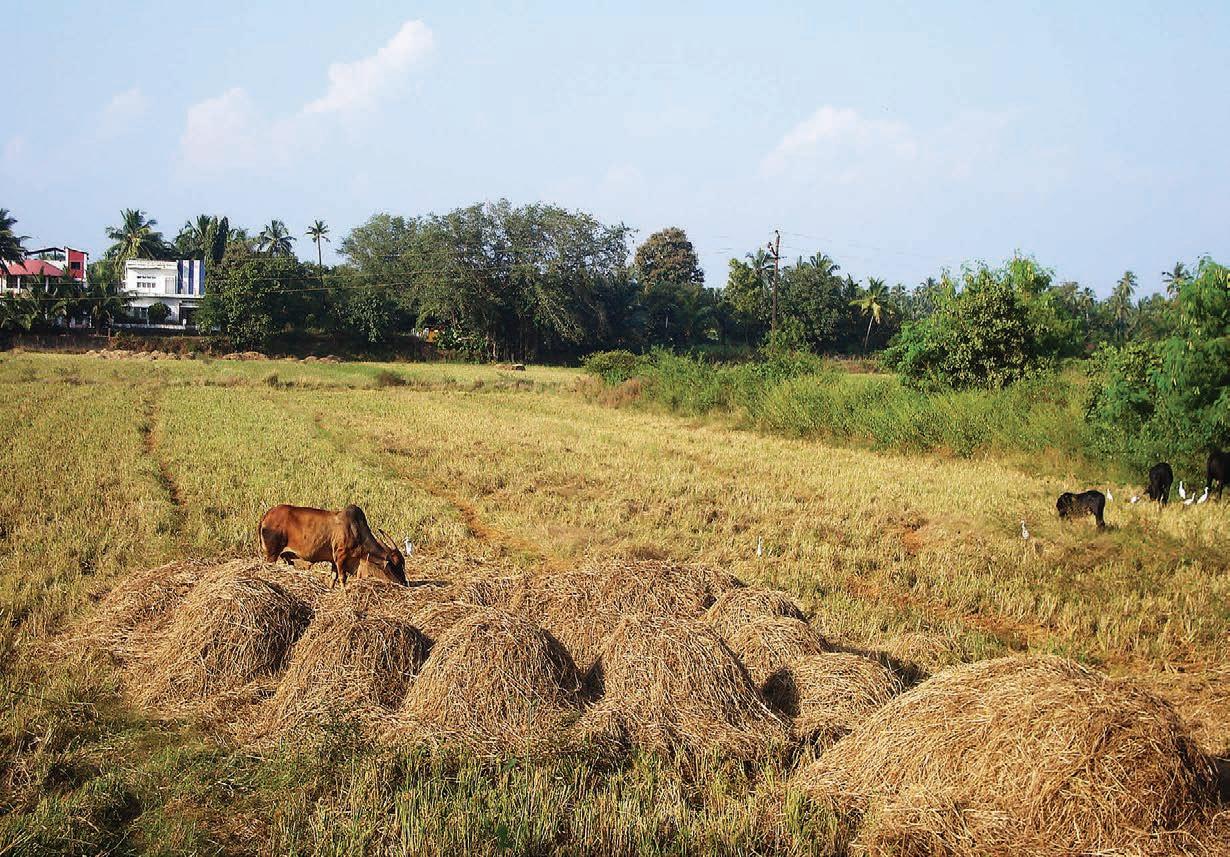
OUTPUT:
did the producer boards. In India, one of its most prominent entrepreneurs, CT Chidambaram, became head of the outfit.
An early visit by the head of the Dairy Board, Sir Dryden Spring, went especially well. Or so it seemed to me. In the 1960s, under our aid programme, NZ had set up India’s celebrated co-operative dairy industry, so we had no difficulty in scheduling a courtesy call on the prime minister. Next, the minister of agriculture received us most warmly.
“Sir Spring,” he said at the outset, “I know you are a dairy farmer. May I ask how many cows do you have?”
“Well, I have two herds so that is about 240.”
“I am a dairy farmer too.”
“ Oh ... and how many do you have?”
“I am having three.”
Well-travelled and experienced, Dryden did not bat an eye. He knew that three was two more than the average Indian dairy farmer owned. They fell to talking about their herds and some of the issues that dairy farmers faced. It made me proud to be a New Zealander.
But it did not butter any parsnips. Nor did visits from the Apple and Pear Board or from the Forestry Corporation, which, in a previous avatar, had set up the Indian Forestry Service.
Ditto a long visit from the
Do you know someone who deserves a story in Farmers Weekly?
Why not write it yourself?
We’re keen to hear local stories about the innovators, inspirations and characters that keep our communities ticking over. Farmers tell the best stories and we want to hear yours.
yourstory@agrihq.co.nz
CEO of Fletcher Construction, to whom I’d promised there were extensive opportunities in postharvest handling equipment and infrastructures. We ran into piles of bureaucratic obduracy both on and behind desks.
That was 30 years ago. And India today has a booming economy. And Australia has a free trade agreement.
Some will say that a small economy such as ours simply can’t afford the effort required.
But that took years of intense and sustained bilateral political and trade diplomacy and a significant deployment of financial and human resources. This was centered on an expanding set of Australian government offices in India and also on a constant flow of ministerial pol/ec delegations.
Today the India relationship is one of Australia’s most important and mutually productive –politically, strategically and economically. It’s taken some 25 years.
When I served there, the Indians disdained what they saw as Australia’s middle power pretensions and its subservient relationship with Washington. The relationship was pretty thin.
That was then; how times have changed.
To achieve an FTA with India will require some years of agreeable foreplay not immediately directed at the ultimate objective. The relationship has to be deepened and widened. This will need sustained effort and the deployment of considerable resources.
Some will say that a small economy such as ours simply can’t afford the effort required. That China surely offers us more than sufficient trade opportunities. They might cite a wise Ministry of Foreign Affairs and Trade mantra that was drummed into us as cadets: “Small country, hard choices”.
Sometimes in the business of representing NZ abroad it is all too easy to forget how small and distant we are. I remember once at a small dinner party in Delhi the Indian foreign secretary – a good friend – saying that NZ often punched above its weight. “Well,” said my quintessential Aussie counterpart, “it would be bloody hard for them to punch below it.”
So, NZ representatives abroad have to get up especially early every morning. No one knows this better than our veteran foreign minister. Nothing ventured, nothing gained. If we fail to achieve an FTA with India, it should not be for want of trying.
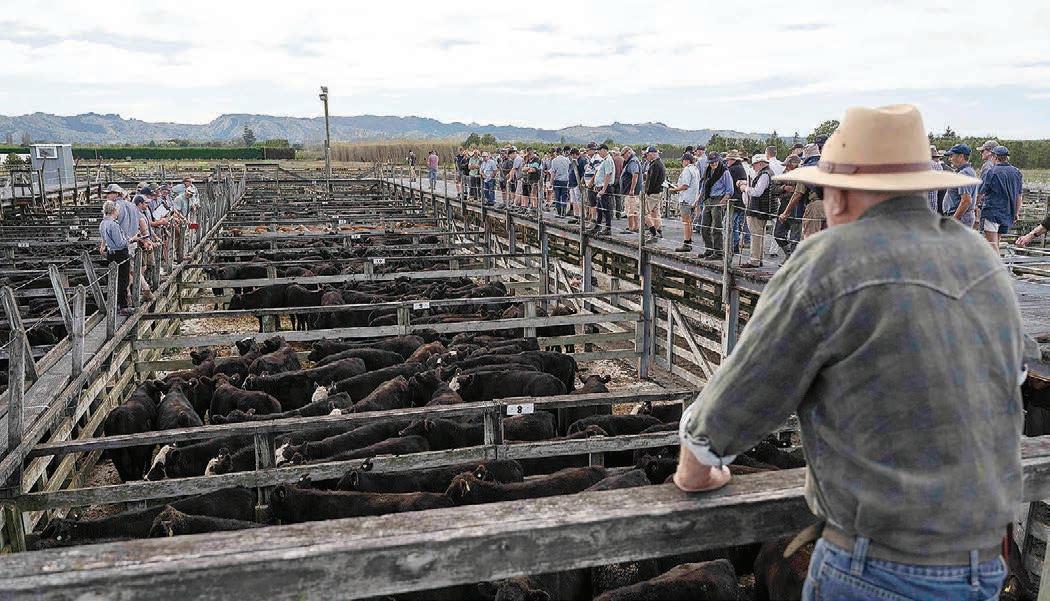

THE article “Report warns of animal welfare ‘gap’” on page 8 concerning New Zealand applying its animal protection standards to imported animal products rings a bell with me.
I think it is totally ridiculous that we have high animal welfare standards here with all the costs that are involved, yet we ignore the standards in the countries we import animal products from. That puts the New Zealand producer at a major disadvantage as it’s considerably cheaper to import many animal products from countries that have minimal animal welfare standards.
The report, Closing the Welfare Gap: Why New Zealand must apply its animal protection standards to imports, was released by Animal Policy International, the SPCA and
the NZ Animal Law Association.
There are two issues. The first is that we have in many cases excessive animal welfare rules.
Our Animal Welfare Advisory Committee (NAWAC) has always appeared to me to be out of control and impractical in the extreme. The obligations it puts on NZ farmers are excessive.
The second is that NAWAC recommends laws and regulations that farmers are legally required to follow. That has a cost and a large one. What it means is that local farmers can’t compete with imported products from countries that have little or no animal welfare standards such as Canada, Poland, Estonia and Spain. It’s a ridiculous situation.
So now we have a report that wants the government to insist that countries who import animal products into NZ have the same animal welfare standards as we do.
It shouldn’t come as a surprise to anyone as in 2022 more than 3000 Kiwis signed a petition urging the then government to do just that.
In addition, as Farmers Weekly reports, the current document says that insistence on animal welfare requirements on imports is “permitted under the World Trade Organisation rules”.
To date the government hasn’t been enthusiastic. Its position is that “animal welfare standards are dependent on each country’s domestic context and that imports shouldn’t be restricted on the basis of method of production”. I disagree.
The report found that:
• Over 90% of pork comes from
countries that allow sow stalls and farrowing crates. Sow stalls were banned here is 2016 with farrowing crates to be phased out by next year.
• All of our imported wool comes from Australia where mulesing is permitted. It is a criminal offence in NZ.
• Over 80% of liquid egg imports comes from countries that allow caged hens. They’re banned here. What that means is that local producers are hugely disadvantaged because animal welfare has a cost, which is why I support imposing NZ welfare standards on imported animal products.
Currently the countryof-origin labelling on pork products in NZ is farcical.
There are two other reasons to insist on change.
The first is that free trade agreements can incorporate animal welfare standards. The second is that our stringent animal welfare rules here actually mean that animals internationally are worse off.
Going to the Ministry of Foreign Affairs and Trade website, you can read many of the weird and wonderful rules that have been incorporated into FTAs and remember that once the FTA has been ratified those rules are legally binding.
With the NZ-European Union agreement you can read that “key provisions relate to labour

In this series, the lads go woke
WHEN I was 12, I was lucky enough to attend the world Ayrshire Conference
like his dad before him) loved the Ayrshire cow and attending the massive show was a step up from Matangi School’s Ag Day for me.
Ayrshire genetics from all over the world were present and a calf from our farm, delivered via embryo transfer, was for sale. As a 12-year-old, it was my first real insight that there is a bit more to the world than the Waikato – and a lot more to farming than what I had seen from behind the farm gate. Getting to Toronto meant travelling through LA. I hadn’t seen homelessness before. As a child in a Kiwi rural community, I was unaware of who the rich and poor kids were and it was great.
Hamilton at that time had one homeless fella. But that was “back in my day”.
It was on this trip staying with Larry that I was given a piece of advice. “Phil, do you want to know how to get a million dollars? Start with two million and go farming.”
Maybe Larry was a poor farmer, but as a sheep and beef farmer today, I often feel like I am slowly going broke.
The current low commodity

standards, gender equality, climate change and emissions trading”, among others.
In addition there are outcomes for Māori that, I’d respectfully suggest, have absolutely nothing to do with free trade.
What all that tells me is that there is no reason not to include animal welfare in FTAs.
The second issue is simple. If I consume an imported leg of pork because it’s cheaper, I’m supporting raising pigs under inferior welfare standards to NZ. I could argue that a pig in, for example, Estonia, should have the same protections as a pig raised here, if we are to be consistent.
Large-scale pig farmer and long serving Pork NZ board member Helen Andrews has strong views on the subject.
“As a producer of pork farmed to some of the highest animal welfare standards internationally, we shouldn’t see this commitment to our animals undermined,” she told me.
“We continue to review the latest scientific research as we strive to be at the top of our game in the animal welfare arena. We would like to see our work recognised and supported with clear labelling which ultimately allows the public to make informed choices”.
Currently the country-of-origin labelling on pork products in NZ is farcical.
My position is simple.
We can legally incorporate animal welfare into trade agreements. If we can acknowledge sustainable and inclusive economic development, Māori and gender equity, we can acknowledge animal welfare.
The NZ producer certainly needs the playing field to be level. Currently it isn’t. I’d also suggest that the public are increasingly demanding improved animal welfare standards whether the animal is locally produced or imported. We just need the political will to progress and that should be a given.
prices, challenging weather for many, high input costs, a readjustment in land values, political instability and what for most of us is the kicker, interest rates ...
The latter are at or above original stress test levels for bank budgets. This “asset rich, cash poor” pressure makes it feel like you are going broke a whole lot quicker these days.
Thinking of Larry 30 years ago reminds me that this is not new, but are there other, newer contributing factors afoot?
In the past five years, farmers across NZ have invested significantly in the retirement of marginal land, the fencing of waterways and other practices to improve the environment. A stick has threatened, but through banding together in catchment groups many have realised that doing right for the environment is often doing alright by the business and feels good as a community.
And then we hear the current cry: GO WOKE, GO BROKE.
This catchphrase has gained momentum and seems similar
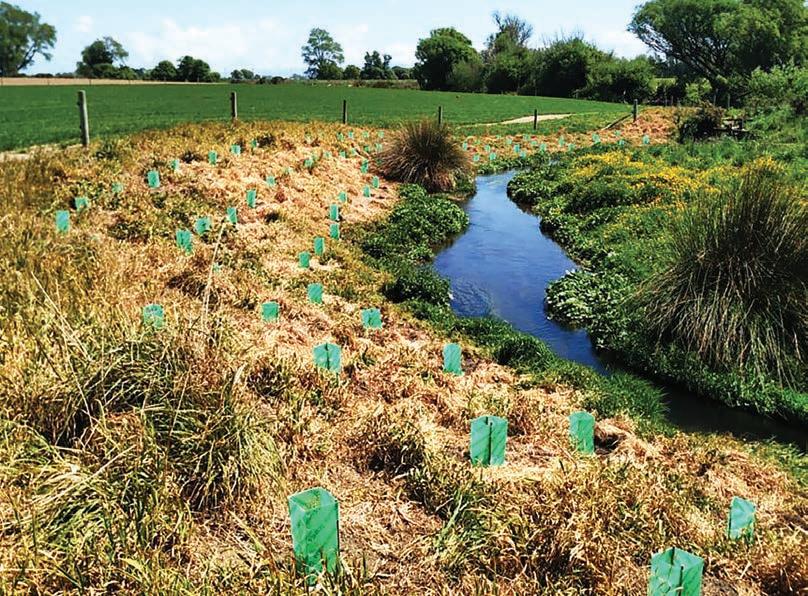
To some, the very fact that I farm may mean I am a redneck hooked on the climate-destroying practices of a broken food system.
to previous concepts of political correctness or the nanny state. To many it is a call for government
bureaucracy to stop doing dumb stuff that is holding the economy back. This desire to not make dumb bureaucratic decisions is a natural request for farmers – the ultimate pragmatists.
In a New Zealand farming context, “woke” is often applied to those practices that represent a change from the status quo. Organics, biodiversity
Continued next page
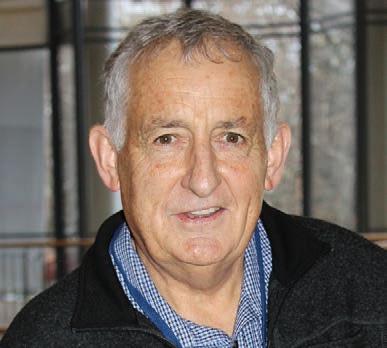
SYNLAIT’S announcements to the NZX on April 2 made it clear that it is battling for survival. Notes to the half-yearly accounts confirm that there are big doubts as to whether it will be able to continue as a going concern beyond the end of this year.
Potentially, the final crash could occur even earlier, with the support of its bankers having been renewed only through to July and highly conditional on new outside funds becoming available.
It all depends on whether Synlait can sell sufficient assets plus raise lots of new equity or quasi-equity elsewhere. It is now clear that Synlait, having made an after-tax half-yearly loss of $92.2 million, cannot hope to survive unless both can occur.
Much of the big loss is due to asset impairments linked to underutilisation, particularly in the North Island. But the problems run a lot deeper than that. As Synlait CEO Grant Watson summed up succinctly in a subsequent audio hook-up for the financial community, the pickle (my term) that it finds itself in is having “too much debt and too much capacity”.
At one level, there is nothing particularly surprising in the Synlait announcements. I was counting down the days over Easter, waiting for Tuesday’s report, knowing that it had to be bleak. But seeing it written so starkly, even with much of it relegated to the notes attached to the half-yearly financial report, reinforces that what I already suspected is now very much the reality.
In relation to those financial report notes, I quote first from the Synlait directors themselves from a section headed Major Uncertainties relating to Going Concern.
The directors say: “As at 31 January 2024, the Group recorded an after-tax loss for the six months of $92.2m, operating cash outflows
Continued from previous page
enhancement and the “green movement” are often targets.
Most recently, doing our bit for emissions reductions has been considered by some to be “woke”.
Others consider it a proactive action that means we are listening
of $98.1m and a working cash deficit of $204.9m, with loans and borrowings due for repayment and/or refinancing in the next twelve months of $514.1m.”
Further down they refer to Synlait’s “current liabilities exceeding its current assets by $204.9m” and that Synlait is “unable to repay these debts on demand without additional support from shareholders or other sources of capital”. They add that Synlait’s “successful execution of an equity raise, in combination with other deleveraging options by 31 July 2024 ... is critical to the ability of the group to continue as a trading concern”.
Auditors PwC in their signoff draw attention to these same statements. They then reinforce this by saying in their own words that: “The ability of the group to continue trading as a going concern is dependent on the ability of the directors to successfully execute an equity raise in combination with other deleveraging options by 31 July 2024”.
If Synlait cannot continue as a going concern, that does not mean that the big Dunsandel infrastructure will become redundant. Someone will buy it and milk will still flow through it, but there are big questions as to who the someone might be.
My judgment is that Synlait has no longterm future without the unconstrained loyalty of its farmer-suppliers.
In contrast, the questions about the future of Pōkeno in the North Island, which includes two wet-mix facilities, together with the Auckland dry-mix and canning operations, are less clear. Both suffer from serious underutilisation, which I have suspected for some time as being the situation, but previously I had no data to prove it.
The Pōkeno and Auckland assets will soon go to market.
Following the NZX announcements, Watson said in the subsequent audio hook-up that he thought those assets would be best sold as a package, with any likely buyer coming from the advanced nutrition rather than commodity sector.
If the Pōkeno and Auckland canning operations do sell, it might be for a song. Currently, these facilities do not even cover their operating costs, with the most fundamental issue being not enough milk supply.
As for Synlait’s Dairyworks assets in the South Island, these
to our international customers. To some within farming, I may be a woke Lefty idealist who is overly interested in the environment and biodiversity. To others outside of farming, the very fact that I farm may mean I am a redneck hooked on unsustainable, extractive, climate-destroying
have been on the market for almost a year. Watson said Synlait thought it was close to a binding offer last week, but the likely buyer withdrew at the last moment on account of the timing supposedly not being right. Watson also said in the audio hook-up that Synlait has two other potential buyers with whom it will have further discussions over the next two months in search of a binding offer.
Watson reported that Bright, as the major shareholder with just over 39% of ownership, was supportive of a capital raising and that it would participate in this raising. Watson implied that Bright would at least maintain its current percentage of overall shareholding. Unstated was that there are major hurdles to increasing their shareholding beyond 40% without an offer to buy out all shareholders.
Bright has also committed to short-term funding via a loan of $130m, with final details to be agreed to, but enough information to satisfy the banks in the meantime.
In response to a question on the audio hook-up, Watson advised that a capital raising had not been discussed with the a2 Milk Company (a2Milk), which is the second biggest shareholder at 19.9%. Watson was clearly reluctant to be drawn out on the a2Milk relationship but implied that the a2 Chinese-label product, but possibly not the English-label product, was likely to continue being supplied by Synlait.
The implication was that a2Milk will have nowhere else to go for quite some time given the licensing requirements for Chinese-label product.
It is apparent that there has been absolutely no thawing of the relationship between Synlait and a2Milk. As one farmer described to me recently, it resembles a very acrimonious divorce. The two divorcees still have to deal with each other in relation to the “dairy child” that they conceived, nurtured and still love, but there is no longer any love or even civility in their own relationship. Indeed, the intensity of the personal dislike is at extreme. Binding arbitration has supposedly been going on for months. How much longer is needed?
Something that was not discussed in the audio hook-up was the major issue of farmer loyalty. Most of the farmersuppliers are tied to Synlait through to June 2026, but a small number can and will leave this year. Many plan to submit “cease to supply” statements by June of this year, which will allow them to depart in June 2026.
practices of a broken food system. Actually, I’m just Phil Weir. I pay the bills by farming animals with the sole purpose of turning them into meat, I plant natives to enhance biodiversity and because it feels good, I eat vegetarian meals regularly and I still enjoy Waikato Draught from a can.

These farmers do have other options in 2026, or earlier if Synlait fails in its contractual requirements to pay a competitive price. The cash required to join Fonterra is now much less than a few years ago. Pōkeno farmers also have at least two other Waikato processors available. In contrast, no one is going to sign up to a new supply contract with Synlait in the current environment.
My judgment is that Synlait has no long-term future without the unconstrained loyalty of its farmer-suppliers.
I doubt whether that loyalty is now recoverable as long as Synlait is limping along. Synlait will certainly not regain that loyalty if there is any risk going forward of being constrained in any way by lack of capital.
This means that whoever comes into the Synlait business has to bring in enough cash via new shares to pay off the vast majority of the debt, and to satisfy farmers
The “woke” parts of my identity and farm aren’t making me go broke. The big issues are – like interest rate hikes, the changing climate, demand in the Chinese middle class and the price of fert.
If I were to focus on the “woke” stuff, I’d be wasting time on diversions, instead of the issues
that it is there for the long term.
By my reckoning, that is an issue that only Bright or a2Milk can solve, either singly or together. Otherwise, it is going to be a slow trainwreck.
A detailed assessment of how Synlait ever got into this mess is something for another day. However, the starting point is that Synlait was always an entrepreneurial company that relied heavily on debt-funded growth.
My brief assessment is that right back in 2018 the company started to fly too close to the sun, thinking that the good fortune that had befallen it in earlier years was repeatable.
At that point it made a series of bad strategic choices relating to Pōkeno, Dairyworks and Talbot Cheese. Spacecraft Synlait then became too heavy. It lacked the rocket power once economic conditions changed and the sun got too close.
that really matter to my family and farm.
I will keep my efforts focused on the things within my control, and an ear out to the broader world for the things that could send me broke. That’s a long list, with “wokeness” a long, long way from the top.
Gordonton’s Crawford clan make a habit of volunteering in their local community.
DAIRY farmers Josh and Emma Crawford love volunteering in their local community to help build a positive future for young people.
“We want all children to live their best lives and have great opportunities,” Emma says. The couple have four children and are involved in local school, sport and sustainability initiatives.
Josh and Emma farm in Gordonton, a semi-rural community about 20km from Hamilton’s CBD. They enjoy the mix of rural and urban life and want to inspire young people to become dairy farmers one day.
With all their volunteering, Josh says there’s never a dull day in their household.
“We don’t sit around watching TV. There’s always something on the go or in the planning stage.”
Emma and Josh are working with others on a bush group project at Gordonton School, where students get out of the classroom and help regenerate the school’s native bush area. The children help with planting and fencing to enhance and protect the area.
“It’s all about bettering the school and the environment, and teaching children how to contribute to their local community,” Emma says.
Emma chairs Gordonton School’s Ag Day, where students bring their pets to school once a year to compete in fun events. Josh describes himself as the gopher and helps ensure everyone enjoys the day.
The Ag Day previously focused on farm animals, including calves, lambs and kid goats, and Emma worked with parents and teachers as a team to add new activities. Each class makes a product to sell on the day to fundraise for an activity the class would like to do.
There are also craft activities, baking, flower arrangements and miniature scenes.
“We love seeing town and country kids get the most out of the day and learn from each other,” Emma says.
As well as being in charge of the financial side of the family farm, including budgets and accounts, and helping milk the cows, Emma works part-time as a learning assistant and relief teacher.
She is treasurer of the Taupiri junior rugby club committee. Josh previously coached rugby and hopes to get back into it when he’s less busy on the farm.
“It’s great to have variety in our lives and we have met so many people in our community through volunteering,” Emma says.
Josh is encouraging young people to consider farming and rural communities for their future as a great lifestyle.
Working with DairyNZ, the couple regularly host students from Hamilton’s Wintec | Te Pūkenga technical institute.
The students take part in practical activities and have the opportunity to consider if farming is for them.
Josh has lived both in town and the country and sees the bright sides of both. He and Emma now lease the family farm from his parents, Dave and Sue Crawford. The couple also lease the farm next door, as they work towards owning their own farm.

After leaving school, Josh did an engineering apprenticeship and worked as a stainless steel fabricator in Hamilton for about six years, building milk silos and tankers for the dairy sector.
“I loved working in the city but the call of the country was so strong, I convinced Emma rural life was the way to go. Farming is our future,” Josh says.
The couple call their four children their farming buddies. Madi, 10, has a great bond with the cows and Alex, 8, loves helping to bring them to the cowshed to be milked. Reid, 6, is constantly on the move and reminds his parents of what’s coming up in the family diary. Brae, 2 in April, has
We don’t sit around watching TV. There’s always something on the go or in the planning stage.
Josh Crawford Gordontona passion for tractors and diggers and loves everything to do with the farm. Josh and Emma have high hopes their children will carry on the farming tradition. “We hope our children will volunteer in their communities in the future. We know that the more you give, the more you get back.
People never hesitate to give us a hand if we need it,” Josh says. The couple are passionate about mental health. “We believe it’s really important to get off the farm from time to time and get involved in other activities, whether it’s camping, sport, recreation or getting involved in your local community,” Emma says.
“We encourage people to talk to others if they’re going through challenges and to ask for help when needed. You might be surprised how much people step up to help you out and it’s better than going it alone. That’s what community is all about,” Emma says.

EXCELLENCE will meet innovation as the dairy industry gears up for New Zealand’s premier dairy conference.
The South Island Dairy Event (SIDE) 2024 will celebrate 25 years as it brings together farmers from across the South Island for the two-day conference filled with informing workshops and expert speakers.
The event was established in 1998 as a platform for South Island farmers to evaluate knowledge and skills relevant to their business.
SIDE has grown over the years to become NZ’s largest dairy conference tailored specifically towards empowering farmers through education and networking opportunities.
Event chair Jonny Hoets said “this is an event like no other”, offering attendees the opportunity to gain insight into cutting-edge research and to network with likeminded individuals.
“It’s not just about learning new strategies or techniques; it’s about
embracing change and excelling through challenges.”
Registrations are now open, with the 25th annual event this year taking place at Lincoln University.
Hoets said SIDE 2024 promises a lineup of workshop topics that address key issues facing South Island dairy farmers.
With keynote speakers including former Australian SAS medic Dan Pronk, Fonterra’s chief science and technology officer Jeremy Hill and Hemprino and Meat the Need founder Siobhan O’Malley, attendees can expect to be inspired by industry leaders who are paving the way for success in their industries.
“We believe that empowering dairy farmers is crucial to creating positive opportunities for growth,” Hoets said.
“By attending SIDE 2024, participants will have the chance to learn how to improve their businesses while adapting to changing consumer demands and regulatory requirements.”
As well as informative workshops and expert presentations, attendees can opt in to visit Lincoln University’s research farms on day one, Monday, June 24.
The field trip will provide a firsthand look at the latest research programmes being conducted at Ashley Dene and Lincoln University Research Dairy Farm (LURDF), offering valuable insights into innovative practices.
BrightSIDE is also back and this year participants will kick off their day by joining the main SIDE event at Lincoln University in the morning before heading to Ashley Dene, one of Lincoln University’s research farms.
At Ashley Dene participants will rotate through various workshops focusing on various aspects of farming, such as hoof trimming, pasture management, calving and reproduction.
Hoets urged farmers to get involved.
“Don’t miss out on this unique opportunity to connect with fellow farmers, expand your knowledge base and invest in your team’s development,” he said.
MORE:
For more information and to register for SIDE 2024 visit: https://www.side.org.nz/EventDetails
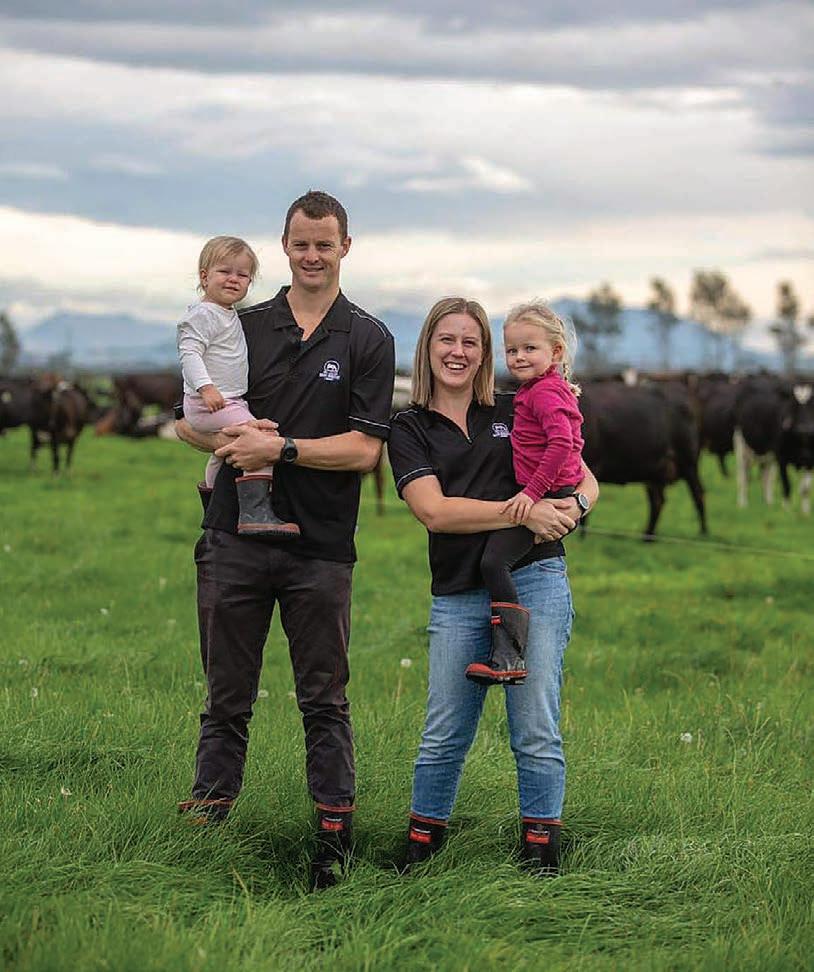
Getting promising new additives into free-ranging animals is the next hurdle – and a sizeable one. Richard Rennie, in Queensland to find out how the neighbours plan to tackle methane mitigation, reports.
ASENIOR Australian livestock researcher has cautioned that plenty of hurdles remain to be cleared before methane mitigators can provide even part of the solution to greenhouse gas emissions, with New Zealand and Australia sharing many of those challenges.
Dr Chris McSweeney, chief research scientist at Australia’s CSIRO in Brisbane, says as appealing as methane mitigators are as a solution to dealing with livestock emissions, the devil is deep in the detail in terms of how countries such as NZ and Australia will deliver them to their freerange livestock.
McSweeney has a long career focused on ruminant production, with expertise in many aspects of Queensland’s extensive beef production systems.
He welcomes the efforts made to date to develop mitigators, including DSM’s Bovaer and Australia’s own Asparagopsis red seaweed discovery.
He says he is particularly impressed with the efforts DSM has taken to ensure Bovaer’s efficacy, albeit in a feedlot situation to date, and the scientific transparency behind the product’s targeted, specific action.
Trial indications are that Bovaer can reduce methane emissions by 40-50% in feedlot cattle.
But he remains cautious about Asparagopsis and its active ingredient bromoform, still subject to deeper scrutiny in terms of bromoform’s residue and longer term implications for sustained feeding.
In NZ, Fonterra is trialling Kowbucha, including feeding it to young non-lactating dairy calves to study whether the potential rumen modification it could deliver will remain when they start lactating.
It will work, it is just how do you feed it to pastoral animals regularly?
Dr Chris McSweeney CSIRO, Australia
He noted earlier work has also been done on this practice with other products, with mixed success.
“There is a notion you can intervene early in life to change the rumen microbiology and methane production long term, but this is somewhat questionable.”
As convinced as he is by the extensive development and trialling DSM has undertaken with Bovaer and its active’s very targeted behaviour, he maintains the good science behind it represents only half the job.
“It will work, it is just how do you feed it to pastoral animals regularly?
“There is also a lot of work to be done for regulators to accept a product, in terms of trial work across regions and species, and once you have something that works, it has to be done a few times across generations.”
He suspects any mitigation compound will require some sort of accreditation system that also allows for the fact that lab or small trial results don’t reflect the reductions achieved in the reality of a commercial farm system.
“And of course regulators need to be assured it has actually been purchased and administered, and not just poured down the creek somewhere.”
He says the farming sector is rightly highly fixated on how these aspects will be managed.
In an extensive pastoral system, the sheer practicalities of application are also apparent.
“You have the issue of breeding herds, for example. The biggest emissions are coming from breeding herds, they graze on the poorer country and are on farm for longer periods.
“If they are empty, then all they have done is produce methane, with nothing to show for it.”
For that reason, he sees Australia’s beef herd management system, overseen by the Clean

PRACTICALITIES: CSIRO’s top production animal scientist Dr Chris McSweeney says the practicalities of feeding free-ranging cattle and sheep methane reducing additives are at least as challenging as developing the science behind mitigators themselves.
Energy Regulator, as a practical approach to dealing with sector emission reductions.
It sets the rules for crediting emissions reductions achieved in pastoral beef herds. Reductions in methane are largely achieved through improvements in methane efficiency. For beef cattle emissions, intensity is measured through tonnes of GHG produced per tonne of beef.
“So, the introduction of supplements, a culling programme, genetics, improved pastures, improvements in calf rates, they
all contribute to incremental improvements in that figure and those gains can be claimed as carbon credit units.
“On grounds of improved productivity, it is a good project.”
He says larger pastoral companies in particular focus on this scheme, on grounds that failing to do so will see banks and venture capital investors shy away from investment.
However, he also acknowledged such a scheme will see properties plateau in terms of what they can achieve.
Staff reporter TECHNOLOGY Research
A STARTUP springing from research at Massey University and the Riddet Institute has raised $2.7 million in “seed” funding, led by Icehouse Ventures, for its novel technology extracting plant-based milk from seeds.
Palmerston North-based ANDFOODS uses the seeds or pulses of a legume to create a range of allergen-free dairy alternatives, without compromising the environment.
The investment round will allow the startup to take its product to market and accelerate its R&D efforts, said ANDFOODS chief executive Alex Devereux.
“With the amount of R&D that’s been invested, ANDFOODS is in an incredible position as we go into the market with a product that has years of science behind it. As well as being one of the few allergenfree dairy alternatives, our process uses fermentation to help give ANDFOODS greater control of flavour profile and other important properties,” Devereux said.
Since launching as a company less than a year ago, the company
has seen a flurry of momentum, adding Leon Clement (former Synlait CEO, ex-Fonterra MD) as its chair, and starting product development work with some of the largest food companies in the world.
The instant commercial momentum made the investment decision a simple one, said Icehouse Ventures partner Barnaby Marshall.
This has been a union of the special ingredients native to my home in India, combined with the resources and expertise from the team at the Riddet Institute.
Dr Arup Nag ANDFOODS
“No one is doubting the demand for dairy-free products. Consumers want them, the environment needs them, but at the end of the day they have to stand up to the taste test. When I first heard about ANDFOODS, I put it into the bucket of ‘another plant-based

milk’, and was duly sceptical — then I tasted it. ANDFOODS has developed something that is poised to become a fundamental ingredient for all kinds of food producers, at a high enough quality that it’s immune to changing trends,” Marshall said. Though many dairy alternatives do a reasonable job of capturing the taste and texture of dairy milk,
FINGER ON THE PULSE:
During Massey’s investigation into new candidates for plantbased milks, Dr Arup Nag recalled the latent potential of a legume seed from his homeland India.
few to date have come close to emulating the measurable quality of high-grade cow-based creams or milk powders. However, ANDFOODS’ signature cream product has already eclipsed all other plant-based creams in its lab and kitchen testing, with a consistent 140% overrun (its ability to take on air and maintain shape) and creamy taste profile.
These overrun results are more comparable to the standard bearing ultra high temperature (UHT) creams preferred by commercial kitchens and food manufacturers.
Originally used as an “orphan crop” to regenerate soil between rice harvests, the legume at the heart of ANDFOODS’ research was a brain wave from the company’s CTO and co-founder, Dr Arup Nag.
Nag was born and raised in India, before beginning work as a researcher at Massey University and the Riddet Institute in 2010. During Massey’s investigation into new candidates for plant-based milks, Nag recalled the latent potential of a legume seed from his homeland India, which guided the ensuing multi-year R&D efforts.
“This has been a union of the special ingredients native to my home in India, combined with the resources and expertise from the team at the Riddet Institute. With ANDFOODS we now have the means to commercialise this scientific discovery, and provide the best plant-based cream and ingredients to the world,” Nag said.

SMALLER, more efficient, higher yielding avocado and citrus trees could be the reality for orchardists in coming years thanks to a collaborative effort between Plant & Food Research and Australian genetic researchers.
Earlier work by Plant & Food Research has identified the gene marker in apple root stock that causes dwarfism, a desired trait that enables growers to plant trees in higher densities and increase fruit yield in an orchard’s early years of establishment.
It has been the single most significant factor contributing to remarkable gains in apple orchard productivity that amounts to a 10-fold increase in fruit yield in the past 40 years.
Now Australian genetic researchers at the Queensland University of Technology (QUT) in Brisbane are working with Plant & Food Research to deliver the same benefits in avocado and citrus root stock, using gene editing technology.
In NZ there is the kiwifruit, where you could look to edit for a shorter juvenile period, and against disease.
Professor Peter Prentis
University of Technology
The university’s work recently gained global profile when the first gene-edited banana variety got the green light for commercial release in Australia, providing a lifeline for growers around the world hit by a debilitating tropical fungal disease.
Professor Peter Prentis heads up QUT’s centre for agriculture and the bioeconomy.
He said his team have cleared some important milestones in their work, gene editing citrus and avocado root stock plants in tissue culture.
Today an array of tiny root stock specimens is emerging in the research lab, and the next challenge will be to regenerate them.
“With woody plants, unlike something like grasses or clovers,
breeding is quite a slow process.
“However, gene editing will still look to reduce the time it takes to breed in the dwarfism trait. For avos it could take as long as 25-40 years conventionally. Potentially with GE we can get that down to less than 10.”
In contrast, for apples the dwarfism trait has taken 40 years to get to today’s sized tree, using conventional breeding methods.
Gavin Ross, Plant & Food Research group general manager, said working with the Australian team has given the effort greater impetus.
“The Australian science environment is big on leveraging funding.
“We bring dollars, they put dollars in. That has probably been a greater factor than the differences in each country’s GE regulations.
“The problems we are trying to solve are quite big, and there is a high calibre of scientists, and we have the potential to grow the size of the pie.”
Prentis is optimistic about how the trials are progressing and sees potential for the technology’s application across a wide range of crops.
“We have the likes of the mango here in Australia which could benefit from having a smaller stature tree size and have a more regular fruiting pattern.
“In NZ there is the kiwifruit, where you could look to edit for a shorter juvenile period, and against disease.”
A key benefit of the GE tech is its ability to allow breeders to target the feature they want.
“The problem with conventional breeding methods is that you can also end up bringing other traits across. GE enables you to be specific.”
The benefits of smaller rootstock are not only the ability to plant more densely, but to also set orchards up for greater automation, in both management and harvesting.
Avocado trees, for example, can grow multiple metres high, requiring risky and timeconsuming harvesting methods.
Thanks to dwarfism, and Plant & Foods’ work developing the “two dimensional” tree shape, modern apple orchards frequently feature in-orchard automation at various stages of management.
Acknowledging his native bias, Prentis said that NZ’s GE

END OF AN ERA: From left, brothers John, Philip, Eric, Mike and Peter van Eeden were seventhgeneration tulip growers who sold bulbs into the local market and exported to the United States and the Netherlands. Their last sales were in May last year.

SOUTHLAND tulip grower and bulb exporter Van Eeden Tulips has shut up shop, leaving a gap in the local tulip bulb market.
Philip van Eeden, who handles planning and administration for the group, said their last bulb sales were in May last year.
Van Eeden was in business with his brothers John, Michael, Peter and Eric.
The brothers were seventhgeneration tulip growers, with their parents moving to New Zealand from the Netherlands in the 1950s to start a tulip business.
They grew about 60 varieties on 25 hectares and their operation was the only large grower to service the local market.
A third of their bulbs were sold locally, another third exported to the United States, with the remainder exported to the Netherlands.
Van Eeden said Eric was only a shareholder, and the eldest brothers, Michael and Peter, “were closer to 70 than to 65” and decided to retire.
regulations are significantly more restrictive than Australia’s.
As Australia’s research advances in the agricultural-horticultural field, he believes commercial GE varieties are likely to start proliferating within the next five to seven years.
“But it will not replace conventional breeding entirely. At the end of the day, it is important to have multiple approaches to help us deal with food security and disease response.”
Ross said despite NZ’s cumbersome GE regulations, the country’s researchers have not been sitting on their hands. He is confident a change in rules would see NZ quickly catch up to Australia.
“John and myself were unwilling to take on all the extra workload, and decided it was a good time to wind the business up. We tried to sell it but could not find a buyer in Holland,” he said.
Van Eeden said they did not “look very hard” for buyers in New Zealand, and that finding a local buyer to take over the entire business would have been hard as such a buyer would have to be an experienced tulip grower.
John and myself were unwilling to take on all the extra workload, and decided it was a good time to wind the business up.
Philip van Eeden Van Eeden Tulips
None of the brothers will continue growing. They are selling their land and will “go their separate ways”, Van Eeden said,
None of their children were willing to take over the business, he said.
The Van Eedens were the only local growers to serve the local market, with other growers mostly supplying only export markets.
Van Eeden said they will all definitely miss growing, especially as he and his brothers worked together on a daily basis.
Paul Hoek, owner of Aorangi Bulbs in Feilding, said the Van Eedens are already missed in the market and their exit has left a big gap.
Hoek has been buying tulip bulbs from them for more than 15 years.
While other local growers focus on producing bulbs for cut flowers exported to the northern hemisphere, the Van Eedens were the only suppliers who also grew fancy home garden varieties for local sales, Hoek said.
“We’ve lost a third of the varieties we sold,” he said.
The Van Eedens produced bulbs for local markets, garden centres and direct-to-public mail order merchants, Hoek said, and will be missed not only because of the superb bulbs they grew but also because they were superb to deal with.

RISKY BUSINESS: Avocado trees can grow multiple metres high, requiring risky and time-consuming harvesting methods, says Professor
Think of the massive Fruit Logistica in Germany as speed dating for global horticultural hookups.

Kylie Horomia
Horomia is the growth and transformation manager for AgriTech New Zealand, an independent membership organisation representing the agritech ecosystem.
EVER had a trade show on your wish list? I had Fruit Logistica on mine for 12 years and this year I finally got to see what all the fuss is about.
Fruit Logistica is the largest horticulture trade show in the world, based in Berlin. Prior to covid there was a two-year waiting list to exhibit, which shows the importance of the event on the horticulture calendar.
Here are a few of the key facts:
• The event spans 26 halls on 13 hectares,
• More than 2770 exhibitors from 91 countries (90% from outside Germany),
• Over 66,000 trade visitors from 145 countries (82% from outside Germany).
To put it into perspective, Mystery Creek Fieldays in New

Zealand draws over 100,000 visitors, with 1000 exhibitors across 114ha. However, where Fieldays spans multiple sectors in agriculture, has open fields and a lot of general public, Fruit Logistica is wall to wall exhibitors, trade visitors and a pure focus on horticulture. With most attendees from outside Germany, it’s a true global event. The tickets to attend are relatively cheap, but if you’re travelling from New Zealand, it’s a journey that will hit you in the pocket. Let’s face it, flights aren’t
cheap these days, so be prepared to shell out. Once you add in accommodation costs, food and other additions, your credit card will be weeping from the euro charges.
The great news is the largest producers, distributors and retailers in the world attend this event. You’re never going to get a better opportunity to make some excellent new connections all in one place. So it could work out cheaper than visiting multiple countries.
There are some seriously

To be taken seriously, you have to invest money, otherwise you will stand out like a dog at a cattery ... and not in a cute way.
impressive massive stands there. It is the Oscars of horticulture, after all. For newbies, a 9 square metre basic build will set you back approximately $8000-$10,000, which isn’t too bad (you buy the floor space and then you buy the build on top and a few extras).
However, if you need to ship hardware from New Zealand or other stand pieces it will get very expensive. In addition, you’ll need a minimum of three team members to man the space so that’s additional costs.
Berlin isn’t the type of event you show up with your pull-up banner and fold-out table. To be taken seriously, you have to invest money, otherwise you will stand out like a dog at a cattery ... and not in a cute way.
The great news is gaining valuable return on investment in a short period is highly likely.
NZ company Hectre, which exhibited this year, mentioned it got ROI within the first hour of day one. Other companies I spoke to
also had a positive experience and felt it was well worth the costs to exhibit.
You have to do your pre-event homework. It’s chaotic, colourful and crazy, so you have to be smart about who you need to see, where you need to go and what you need to do.
More importantly, you can’t assume that people will be available for you to speak to as they can be booked up before the event even starts. I got lost all the time. It was frustrating.
The good news is you can “stalk” attendees through the event app and line up meetings prior to arriving. Pull out your speeddating skills and make the most of the three days.
I spent a lot of time peoplewatching and the handshakes and conversations I saw over the week represented billions of dollars flowing through the industry. I could imagine contracts being signed and strategies for the next few years being mapped out. There were no gumboots and plaid shirts at this gig, but rather huge potential for NZ agritech to play a bigger role in global horticulture. I got to tick it off my wish list and would highly recommend it to anyone in the horticulture industry – especially if you’re in the business of agritech.




 Hugh Stringleman NEWS Production
Hugh Stringleman NEWS Production
THE New Zealand avocado industry has come to the end of a very disappointing 2023-24 harvest with the lowest export sales volume of the past 10 years.
Growers have been told to expect prices that will barely cover their picking and packing, certainly not a year’s worth of spraying, tree care and paying down debt.
After the excitement of hosting the World Avocado Congress for the first time in early 2023, the harvest season beginning last July has fallen substantially short of previous years.
Fewer than 1.5 million trays have been exported, compared with up to 5 million in recent more favourable and productive seasons.
The total harvest is forecast at 4.5 million trays, being only 60% of the 7-8 million-tray harvests of the previous four years.
Domestic sales are around 3 million trays annually, worth about $50 million.
Trays are packed with graded fruit up to 5.5kg in total weight.
This season much larger volumes of smaller, lower-grade fruit were sold domestically and prices were lower for consumers and growers.
Class 3 fruit was diverted to oil processors and some growers stopped picking because their returns would not cover the costs of picking and packing.
The orchard gate return will be below $10,000/ha, compared with the range of $17,000 to $45,000 across the past decade.
Fruit that was graded suitable for export will pay the growers about $6 to $7 a tray, versus returns of around $30 in recent years.
Fruit that was graded suitable for export will pay the growers about $6 to $7 a tray, versus returns of around $30 in recent years.
Avocado Export Council chair Jim Tarawa said the pain was felt along the supply chain.
“While growers endure the brunt of these issues it is important to acknowledge the impact that these tough market conditions also
 Hugh Stringleman NEWS Production
Hugh Stringleman NEWS Production
NEW Zealand’s largest producer, Grove Avocado Oil in Bay of Plenty, says the olive oil shortage can be handled by switching to avocado oil, which is in plentiful supply.
Grove bottles up to 600,000 litres of cold-pressed extra virgin oil in plentiful seasons and has bulk stores of oil kept under the right conditions.
“We like to believe that our extra virgin avocado oil is equivalent to

CONFIDENCE: Grove general manager James Greenlees says his avocado oil can replace the increasingly expensive and hardto-get olive oil.

VOLUME: This season much larger volumes of smaller lower-grade fruit were sold domestically and prices were lower for consumers and growers.
have on our harvest, transport and packing service providers, some of whom have already or will likely exit the industry this season,” he wrote in the industry journal Avoscene.
Avocado NZ communications manager Matthew Ball said in the same journal that the domestic market has quickly grown in significance.
“It is now regarded as one of the industry’s most vital components. Its capacity to absorb large volumes and the value it generates” cannot be overstated, he said.
Primor Produce director John Carroll, who sold a majority of the exports in conjunction with other exporters, said Australia had its biggest crop and NZ imports were the smallest for decades.
Asian markets were a mixed bag. Peru sold a massive crop to China, and Australia exported to Hong Kong, Singapore and Malaysia.
“The domestic market was awash with fruit damaged by Cyclone Gabrielle and the export packouts were at an historical low,” Carroll said.
“There was no market for Class 2 fruit with any value and fruit that did make it through to Class 1 had other issues when it aged and was presented for sale.”
Prospects for the coming season are considerably better in terms of quality and quantity.
Southern hemisphere growing competitors Australia and Peru will have lighter crops and NZ projections are for exports of 3 million to 3.5 million trays, he said.

DISASTROUS: Major avocado exporter John Carroll said the season just ending has been the worst for decades as cyclonedamaged fruit was harvested or left on trees because it wouldn’t pay picking costs.
olive oil, or in some ways better,” Grove general manager James Greenlees said.
It has a smoke point of 200degC and is ideal when cooking meat and seafood, for golden caramelisation. The taste of avocado oil is smooth and palatable without the bitterness that some olive oils can develop.
Extra virgin means that ripe avocados are pressed without heat in the same machinery used by olive growers and oil producers.
Grove does not refine the oil, which strips out colour and flavour to obtain even higher smoke points and cooking temperatures.
It has room to expand production but is entirely dependent on the supply of Class 3 fruit from packhouses.
“We can handle more and more fruit but growers do not find it economic to pick just for processing,” Greenlees said.
For Grove, supply has to come through the packhouses to ensure spray diaries and NZ GAP compliance.
“We are NZ-owned and supporting local growers, without the larger carbon footprint of imported ocean freight, using imperfect fruit that would otherwise be considered waste product.”

HOME-GROWN: Grove avocado oil has been cold-pressed in Bay of Plenty for more than 20 years.
A FREE interactive tool has been launched to provide apple and grape growers and prospective investors with a glimpse into how climate change may affect the risk and costs of common plant diseases in different parts of New Zealand.
Created as part of the Our Land and Water National Science Challenge funded by the Ministry for Business, Innovation and Employment, the Changing Climate: Disease Risk & Costs tool allows people to enter their orchard or vineyard’s address to view the risk of apple fire blight, grape powdery mildew and grape botrytis on their crops under different climate change scenarios.
It also translates that risk into financial terms, helping people understand how climate change may affect the cost of managing plant diseases on their land in the decades ahead.
“In simple terms it’s a portal into the future,” said Mike Barley, the director of New Zealand agri-tech company HortPlus.
“It helps with climate adaptation planning and provides easy-to-digest information for people in the apple and winegrowing industry who want to understand how plant disease risks are likely to change, and importantly, what the cost implications of those changes might be.”
HortPlus developed the tool in collaboration with Plant & Food Research (disease models, Te Ao Māori), NIWA (climate models), the Agribusiness and Economics Research Unit (economic modelling) and Applied Research & Technologies (disease model reviews).

 Neal Wallace MARKETS Export
Neal Wallace MARKETS Export
CHERRIES consistently dominate volumes of summerfruit exports, the latest data confirms. Summerfruit NZ statistics for the year to March 17 reveal that 3779 tonnes of cherries were exported, with Taiwan, our biggest market, taking about a third of that at
1735t. Data shows that the cherry industry has grown in importance as an export earner.
In 2018-19, 2682t were exported but it wasn’t until 2021-22 that the 3000 tonne mark was breached, with 3219t sold overseas.
Taiwan has consistently been New Zealand’s largest market for cherries, taking 1089t in 2018-19 and 1404t in 2021-22.
For the season just finished, China was our next largest cherry

customer, buying 698t, followed by Vietnam at 513t, Thailand 212t and Hong Kong 93t.
Central Otago, with its cold winters and hot, dry summers and low humidity, produces about 80% of the NZ cherry crop
In a recent newsletter to growers, Summerfruit NZ chief executive Kate Hellstrom noted summer had been kind to growers with the quality of fruit high and volumes up in most regions except Hawke’s Bay, which was still recovering from Cyclone Gabrielle.
Labour shortages that blighted previous harvests were not an issue, though she noted that having the harvest fall during university holidays was a bonus.
Challenges remain.
“Growers grow because they are passionate and proud of the
it is only the final 20% of the crop that provides the average grower with any profit.
FIELD trials of new disease sensing technology will see a robot deployed on some wineries in Hawke’s Bay and Marlborough this vintage.
Over the past three years scientists at Plant & Food Research have been working with New Zealand agri-tech company Integrape on a disease detection tool known as VinEye.
Plant & Food Research developed the VinEye algorithm, which has learnt through machine learning how to instantly analyse photographs of grapevines and identify vines infected with the costly disease grapevine leafroll disease (GLD).
Having proven the model, the focus has now shifted to deploying the system at scale using autonomous robotic technology and further integrating the VinEye algorithm with the Integrape platform for both reporting and data collection via its Vure scouting app.
During this vintage, the first surveys using robotics are planned on 60 hectares of vineyards in Hawke’s Bay and Marlborough. Integrape has partnered with agricultural robotics supplier Agri Automation, which will provide a self-driving Burro robot that will be equipped with cameras.
The Burro robot will use highprecision RTK GPS and Vision to move up and down vine rows paths
created by Integrape’s vineyard mapping tools, capturing images without human intervention. The footage collected will then be processed and analysed by another partner on the project, agtech company Bitwise Agronomy.
Bitwise Agronomy will use the
We know climate change is anticipated to increase the prevalence of plant health issues, so early detection of diseases is expected to become even more critical.
Dr Karmun Chooi Plant & Food Research
VinEye algorithm to process large amounts of raw data. Analysed data will be fed back to Integrape – whose online monitoring tools and reports are used by more than a third of the local wine industry –for interactive visualisation.
GLD is a significant problem for the wine industry worldwide and is estimated to cost tens of millions of dollars in lost productivity in New Zealand alone. GLD is only visually apparent on vines for a short window around harvest time and detection of the disease can be difficult, requiring trained staff to walk rows undertaking assessments.
“GLD causes vines to produce smaller bunches and prolongs the time it takes for grapes to ripen, thus reducing yield and productivity. Detection is challenging as infected vines have
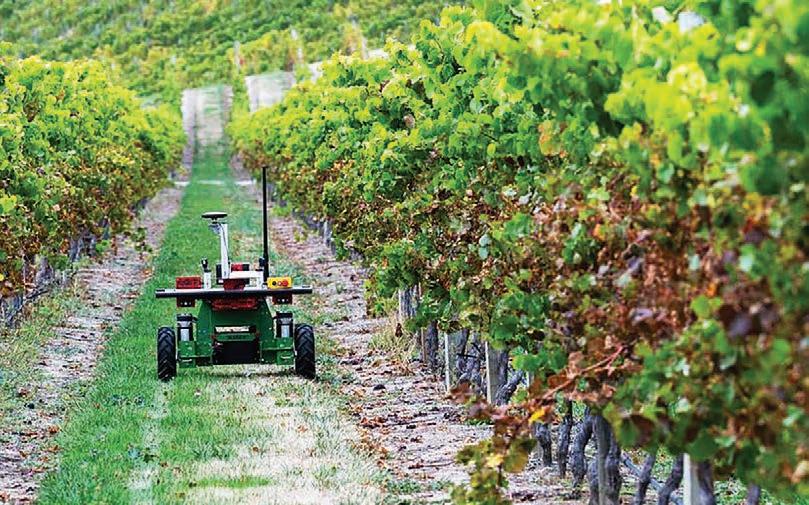

healthy food that they produce,” she said.
“However, their businesses must make a profit. While there have been murmurs about the high price of summerfruit this season, grower costs continue to increase, and it is only the final 20% of the crop that provides the average grower with any profit.”
Apricots are NZ’s second largest export summerfruit crop, but volumes are falling.
Exports in the 2018-19 season were 317t, with 277t going to Australia and 37t to the United States.
In 2023-24 apricot export volumes fell to 43t with 26t going to the US and 15t to Australia.
Peaches were our next most important summerfruit export crop last season at 31t, of which 25t went to Singapore followed by plums at 10t, of which 9t went to the US.

distinctive red leaves, which can be confused with other conditions that may not affect the quality of wine or yield,” said Plant & Food Research project leader, plant pathologist Dr Karmun Chooi.
Chooi said the aim of the VinEye technology is to provide a faster, more accurate and more costeffective alternative to manual detection by skilled professionals.
“We know climate change is anticipated to increase the prevalence of plant health issues, including GLD, so early detection of diseases is expected to become even more critical for industries in the future.”
Integrape founder Joris Besamusca said this year’s survey work, which involves four wineries, will be the most extensive testing that’s been undertaken to date and an important step in bringing the technology to market.
“Partnering with winegrowers, other leading agri-tech companies and Plant & Food Research is providing the opportunity to
develop a tool which could be a game-changer for the industry going forward,” Besamusca said. Bitwise Agronomy’s chief executive and co-founder, Fiona Turner, is excited by the field trials.
“I’m a vineyard owner myself, and lead an agtech company, so I’m always looking for ways to make life easier and more profitable for growers. Bitwise Agronomy specialises in AI and we’re excited to bring our machine learning expertise to process this data.
“Collaborations like this between research and agtech offer highvalue to the industry and help find solutions to real-world farming problems.”
Agri Automation managing director Chris Clifford said the project showcases the versatility of the Burro autonomous mobile robot, adding yet another use-case to its established functions such as carrying harvested fruit and produce, towing trailers, mowing and pest deterrence.




















Federated Farmers are claiming a major advocacy win on Parliament’s announcement that it is kicking o an investigation into rural banking.
“Having the primary production select committee initiate a brie ng to take a closer look at rural banking issues is a really positive rst step forward,” Federated Farmers board member Richard McIntyre says.
“Federated Farmers have been calling for an independent inquiry into rural banking since September last year, so it’s good to see the politicians have sat up and taken notice.”
McIntyre says farming families have been asking fair questions about rural banking and interest rates, and it’s about time they got some straight answers.
“It’s still very early days, and we’re yet to see the terms of reference, but Federated Farmers will de nitely be engaging in this process on behalf of our members.”
Mark Cameron, the committee’s chair, says they’ve heard from many farmers and those living in rural communities about the disparity between rural and urban bank lending practices.
“Based on this widespread feedback from constituents and sector groups, the primary production committee has determined this topic as one worthy of further scrutiny.
“We hope to thoroughly investigate this issue and hear the
experiences of those a ected,” Cameron says.
Brie ngs are a type of inquiry a committee can undertake to give Members of Parliament the chance to inform themselves about topics of interest or concern.
They can be a one-o information session, or substantial consideration of a matter over a longer period, before deciding whether to initiate a more formal inquiry.
“I’m hopeful that when they get their heads under the hood and start looking around, they will be able to see where things aren’t operating as well as they could be, and get to work sorting it out,” McIntyre says.
Federated Farmers’ latest Banking Survey, carried out last November, showed farmers’ satisfaction with their bank was at its lowest point since the survey began in May 2015.
Of the farmers surveyed, a recordhigh 25.8% felt they’d come under ‘undue pressure’ from their bank over the previous six months.
The survey found 44.3% of farmers felt their mental wellbeing had been a ected by their debt levels, interest rates, changing conditions, or other forms of pressure.
Concerns about debt, interest rates and banks have also consistently topped the list of issues driving low farmer con dence in Federated Farmers’ Farmer Con dence survey.
“Those survey results are incredibly concerning and paint a grim picture of how rural communities are feeling about their banking relationships at the moment,” McIntyre says.

incomes – my own family included.
I’m hopeful that when they get their heads under the hood and start looking around, they will be able to see where things aren’t operating as well as they could be, and get to work sorting it out.
“There are a lot of farming families across the country who are under huge nancial pressure this season from rising costs and falling
“For many of those businesses, interest charges will be their single biggest expense. That’s why it’s so important for them to have con dence they’re getting a fair deal from the banking system.”
The Commerce Commission recently carried out a market study into personal banking services, looking at the levels of competition and how things might be improved.
Its draft report, released March 21, found the sector lacked strong and sustained competition that could drive change and deliver bene ts to consumers.
“It was disappointing that rural
business banking was excluded from that study because I think they’d have found farmers face similar challenges,” McIntyre says.
“We have the exact same issues with limited competition, a lack of transparency as to how interest rates are set, and di culty accessing banking services.
“Farmers have really struggled with the widespread closure of local banking branches in rural communities. Online banking isn’t always suitable when you’ve got poor rural connectivity.”
He says Federated Farmers are strongly of the view that rural communities deserve the same assurances that their banking systems are operating in a fair and e cient way.
“Any inquiry into rural banking needs to take a close look at why interest rate margins have shifted signi cantly more for rural lending than for residential in recent years.
“Regulation like the Reserve Bank capital holding and risk weighting requirements have a huge impact on the interest rates farmers pay.
“I think some serious consideration needs to be given to whether we’ve got that balance right.”
McIntyre says he’s also particularly keen for the committee look at how farmers are treated by banks when their businesses become distressed.
“Farmers need to have con dence that when they nd themselves in hard times, whether through drought or a bad season, their bank will work with them to get back on track.”



Farmers stepping into contract milking in the new season should take time to celebrate the achievement and be wary of spending every waking minute on the farm.
That’s the advice from Danielle Hovmand and Sam Ebbett, who joined the Federated Farmers Podcast to share their top tips for new contract milkers.
Hovmand, Federated Farmers Waikato dairy vice chair, says she’d get off the farm more often if she could re-do her first six months in contract milking.
“I took on a contract milking role that was reasonably far from my nearest town. You get really busy with calving and mating and it’s easy to become consumed by what’s happening on the farm.
“I finally got off the farm in November, going to Young Farmers events and discussion groups, and I thought to myself, ‘It would have been so much better if I’d done this earlier on’.
“I started to meet people in the community and make those connections, so becoming a part of that community earlier is something I’d go back and do.”
Now 50/50 sharemilking near Morrinsville, Hovmand says part of becoming self-employed as a contract milker means learning how to look after yourself.
“You’re the boss now, so you have to be able to manage your time and know when to call it quits. That was quite a big learning curve for me.”
Ebbett, Federated Farmers Taranaki dairy chair and national sharefarmer chair, says learning how to take a
Even though I had staff, I worked every day. You need to take time off-farm and not work every hour the sun is up.
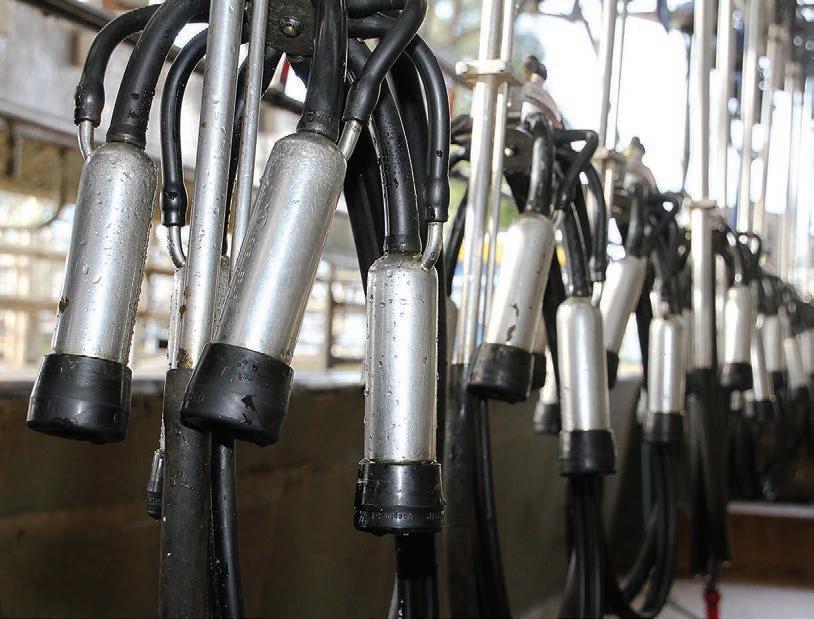
break was a challenge for him too.
“Even though I had staff, I worked every day. You need to take time off-farm and not work every hour the sun is up.
“Sure, it’s about doing what you have to do and doing it to a good standard, but taking some time for yourself is very important.”
Ebbett, who’s now variable order sharemilking near Stratford, encourages new contract milkers to pat themselves on the back for ticking off a major career goal.
“If I could go back, after that first week, I’d probably sit back and congratulate myself because becoming a self-employed contract milker is a big step in your career.
“You’ve done all the hard work with your budgets and getting advice, and now you’re finally a contract milker come June 1. Stop and enjoy it – you’ve done it.”
Learning to communicate well is also crucial for new contract milkers, Hovmand and Ebbett say.
“Communication is key. If something arises and you’re not happy with it, have a calm discussion and figure out a way to come to some sort of agreement and get through it,” Hovmand says.
“Don’t let issues become a bigger problem because, when you do that, it starts to affect your day-to-day work.”
Ebbett says lack of communication is the biggest driver of disputes within contract milking agreements.
“I’d encourage you to nail the communication from day one. No one likes surprises, so upfront it with communication and set a really good benchmark right from the first week.”
The pair also emphasise the importance of going into contract milking with a crystal-clear understanding of all the income and expense numbers.
“You have to make sure it’s viable,” Hovmand says.

TALK: Communication is key, says Federated Farmers Waikato dairy vice chair Danielle Hovmand. “If something arises and you’re not happy with it, have a calm discussion and figure out a way to come to some sort of agreement and get through it.”
“I recommend people use the DairyNZ Contract Milker Calculator. That will set you up really well and can prevent conflict and disappointment in the future.”
“Numbers are now your best friend,” Ebbett says.
“Knowing your numbers inside out and back to front is the best bit of advice I can give to someone.”
Ebbett encourages contract milkers – or any other farmers – to join Federated Farmers to gain heavily discounted industry-leading agreements.
“The Federated Farmers contract milking, sharefarming and employment agreements, are the best you can get on the market.
“The Guaranteed Minimum Return (GMR) in Federated Farmers’ Contract Milking Agreement is industryleading in terms of supporting contract milkers.
“It ensures that during a tough time, be it drought or flood or cyclone, that you can pay your staff, put food on the table and keep operating on your farm regardless of what’s happening with production.”
He says having access to the free 0800 advice line as a member is also really helpful once you’re employing people as a contract milker.
“When anything goes pearshaped, you have that back-up of the Feds legal team to ask the tricky questions. If you’re a member, that’s a free service. It’s priceless – it can help you out massively.”
MORE:







Arecent High Court decision that overturned a nitrogen discharge consent has left an unwelcome question mark hanging over the granting of future discharge consents on the Canterbury Plains.
Federated Farmers vice president Colin Hurst says it’s yet another reason why major overhaul of the Resource Management Act (RMA) can’t come soon enough.
“The court’s decision directing reconsideration of a discharge consent granted by the Canterbury Regional Council is nothing short of an own goal.
“It completely undermines the pragmatic approach Environment Canterbury have been taking in working with farmers to reduce contaminant discharges over time.
“Now those farmers are stuck in a legal quagmire, with huge uncertainty hanging over them,” Hurst says.
Ashburton Lyndhurst Irrigation Ltd is a co-operatively owned scheme that supplies water to 228 local farmers, who collectively farm 32,000ha in Mid-Canterbury.

In 2014 the scheme was granted one of Canterbury’s rst nutrient discharge consents, and a renewed consent allowing management of additional farms to cover a total of 177,000ha was granted by Environment Canterbury in 2021.
An advocacy group, Environmental Law Initiative, sought a judicial review of the decision in the High Court last year.
When granting the consent, the commissioner imposed consent conditions that would result in a signi cant reduction in nitrogen discharges over a 10-year period.
As well as implementation of good management practice and extensive environmental monitoring, the consent required the irrigation scheme to reduce nitrogen discharges by 10% from the 2020 nitrogen leaching load by 1 January 2025, and by 20% by 1 January 2030.
The commissioner relied on the consent conditions to achieve a material improvement to surface water and ground water over the term of the consent.
“The crux of this issue is di ering opinions on how the RMA should be applied in practice,” Hurst says.
Environmental Law Initiative argued the law prevents the council from granting a consent for the discharge of contaminants if it’s likely to have signi cant adverse e ects.
However, the council took a more pragmatic approach that there is an exception where water quality will be within a desired range at the conclusion of the consent, Hurst says.
“This approach would better provide for the sustainable management of resources, including a staged reduction of N discharges and corresponding improvement of ecosystem health in the receiving environment over a short period of time.
“Unfortunately, the Judge sided with the Environmental Law Initiative.”
Hurst says this highlights the

confusion within the RMA where the direct application N is a permitted activity, but the downstream impacts of N discharges may be prohibited. These two positions cannot easily be reconciled, he says.
In a second point of appeal, the Judge held a failure to properly consider the requirements of relevant coastal policy statement in respect of the discharge into Ashburton lagoon was “an error in law”.
This was despite the farming area not being within the coastal area and Canterbury Regional Council having already considered the coastal policy statement when it noti ed the Plan Change to manage nutrient discharges.
The irrigation scheme’s chief executive Rebecca Whillans said local farmers were deeply disappointed with the High Court’s ruling.
“We were pleased with the way Environment Canterbury defended their decision and we’re working

closely with them as we consider our next steps.” She said all the scheme’s shareholder farmers have had audited farm environment plans in place for a long time now.
We were pleased with the way Environment Canterbury defended their decision and we’re working closely with them as we consider our next steps.
Rebecca Whillans Ashburton Lindhurst Irrigation
“The renewed consent granted in 2021 enabled Mid-Canterbury farmers to continue to pro-actively manage the impacts of their farming operations and was an advancement of the consent from 2014.”
The irrigation scheme can continue to operate under the 2021 consent
renewal conditions while it is being reconsidered.
Either Ashburton Lyndhurst Irrigation or Canterbury Regional Council may appeal the decision. Even if that doesn’t happen, the irrigation company will still need to fund a second hearing on its resource consent application.
Other councils and irrigation companies around the country, but particularly in Canterbury, will be watching this case with interest, Hurst says.
“The court’s ruling will have huge implications for other schemes around how the RMA will be interpreted moving forward.
“It’s very unsettling for those farmers a ected, particularly when they’ve made plans and investment decisions based on a consent that was renewed until 2030.
“If this isn’t something the Government are already looking at as part of their RMA reforms, it should be now,” Hurst concluded.

In a meaningful collaboration with the Zanda McDonald Award, Property Brokers is a proud New Zealand partner supporting this Trans-Tasman rural leadership programme.
Zanda McDonald tragically passed away at the age of 41 following an accident on his cattle property in Queensland. McDonald is remembered not only as a proud farmer but also as a true advocate for youth in agriculture and the mentoring required to support their development.
In 2005, Shane McManaway was instrumental in starting a trans-Tasman agricultural networking group. Initially, this group was a small assembly of farmers united by their shared passion and challenges. It quickly became a powerful platform for discussion and problem-solving within the industry. Through this network, the group spearheaded numerous initiatives aimed at promoting agriculture to younger generations, ensuring the vitality and sustainability of the industry.
Following the passing of Zanda McDonald in 2013, the group, under the leadership of Shane McManaway (MNZM) and now known as the Zanda Mentoring Group (ZMG), inaugurated The Zanda McDonald Award in 2014. This prestigious award honours McDonald’s remarkable contributions and continues his work fostering new talent in the agricultural sector. Today, the Zanda Mentoring Group has evolved into a formidable collective comprising over

200 of Australia’s and New Zealand’s leading figures in the rural sector. This network offers exceptional mentorship opportunities to the award’s finalists and winners, truly embodying the spirit of community and support that McDonald championed throughout his life.
The Zanda McDonald Award stands as a beacon for young professionals in the primary industry sectors of New Zealand and Australia. It is more than just an accolade; it is a commitment to the professional development and future success of the young talent in these industries.
Two exceptional young women have been crowned 2024 winners of the Zanda McDonald Award. New Zealander Nancy Crawshaw and Australian Tessa Chartres have taken out top honours with the award.
Crawshaw, 27, is an extension officer for Angus Australia based in New Zealand, using her knowledge of the beef supply chain to support beef production programmes.
The two other very worthy NZ finalists were Carla Muller, principal consultant for Perrin Ag, based in Whakatane, and Tim Dangen, beef farmer at Murawai West Auckland and 2022 recipient of the FMG Young Farmer of the Year.

The NZ alumni associated with this award continue to make stand-out contributions to our primary sector, no less so than recent 2023 recipient Harriet Bremner, whose work in building better resilience into farming life as both author and podcaster continues to help many and Rhys Roberts, as the 2022 recipient and CEO of Align Farms, continues to challenge farming norms through innovation of both onfarm practices and workplace culture at significant scale.
The Trans-Tasman nature of this award offers recipients much, and not only is it anchored in the memory of Queensland cattle farmer Zanda McDonald, but it has also been underpinned by his dear friend and founder of the award, Shane McManaway based in the Wairarapa. Shane and wife Lynnette have played a pivotal role in supporting this leadership award over the last ten years and our primary sector is much better for it.
Shane’s farming contribution includes farming interests in the Wairarapa and Kaikoura, his local community (establishment of Five Rivers Medical Centre alongside Lynnette) and his previous trans-Tasman business career as CEO of Allflex, world leaders in livestock intelligence products when he retired.
The challenges facing farming are obvious, but the Awards annual Impact Summit chaired by Shane McManaway in Queenstown last month was outstanding, and the Zanda McDonald Award alumni in the room equally matched it. If challenge equals opportunity, we are very well placed with leadership like this to take NZ Inc’s primary sector forward.

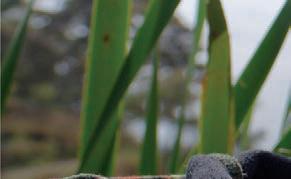















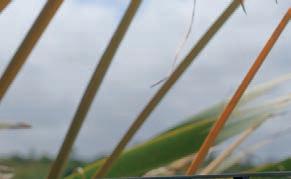
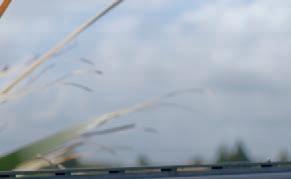
















Springfield 464 Springfield Road Tender

695 ha - Springfield, Central Canterbury
Available to the market for the first time in over 100 years Springvale provides a fantastic opportunity for those seeking a balanced and scaled property. Covering 695 ha there are over 130 ha of flats, with the balance being made up of rolling owns and medium to harder hill. The property is currently leased and has in recent years been utilised as a sheep and beef breeding operation however reference period history (2014-2019) and soil types allow for a broader farming mix which might include dairy support and mixed cropping options. Infrastructure includes two homes, three stand woolshed, haysheds, workshop and stock handling facilities. Properties of this nature seldom come to the market. Discerning and strategic purchasers will recognise this and be cognisant of the potential to enhance the productive capacity of the property. For further information or a viewing contact the listing agents.

Manaia 119 Winks Road
Located on Winks Road in Manaia, this exceptional dairy farm offers 100 hectares (more or less) of premium flat land in a strong dairy farming area, complete with a 36-aside herringbone cowshed, support sheds, two houses, a massive feedpad, and two maize bunkers. With the potential for high production in the hands of committed farmers, this well-set-up property boasts excellent fencing and is well raced, awaiting a passionate farmer to maximize its potential. Don't miss out on this opportunity to own a meticulously maintained dairy farm—call for further details.
Open day: 11.00 - 11.45am, Thursday 11th April, 2024
bayleys.co.nz/2601797


Tender closes 1.00pm, Fri 3rd May, 2024
View By appointment
Web pb.co.nz/DFR178528


Matt Collier
M 027 205 6626 E mattc@pb.co.nz
Simon Anderson
M 021 0828 5532 E simon.anderson@pb.co.nz
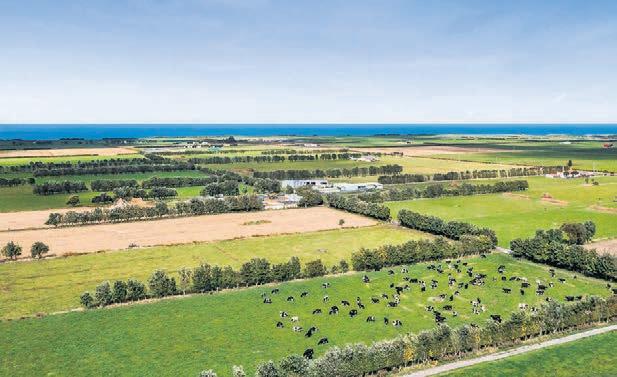

54.5466 ha
Tender (will not be sold prior)
Closing 1pm, Tue 30 Apr 2024
15 Courtenay Street, New Plymouth
Brendan Crowley 027 241 2817
brendan.crowley@bayleys.co.nz
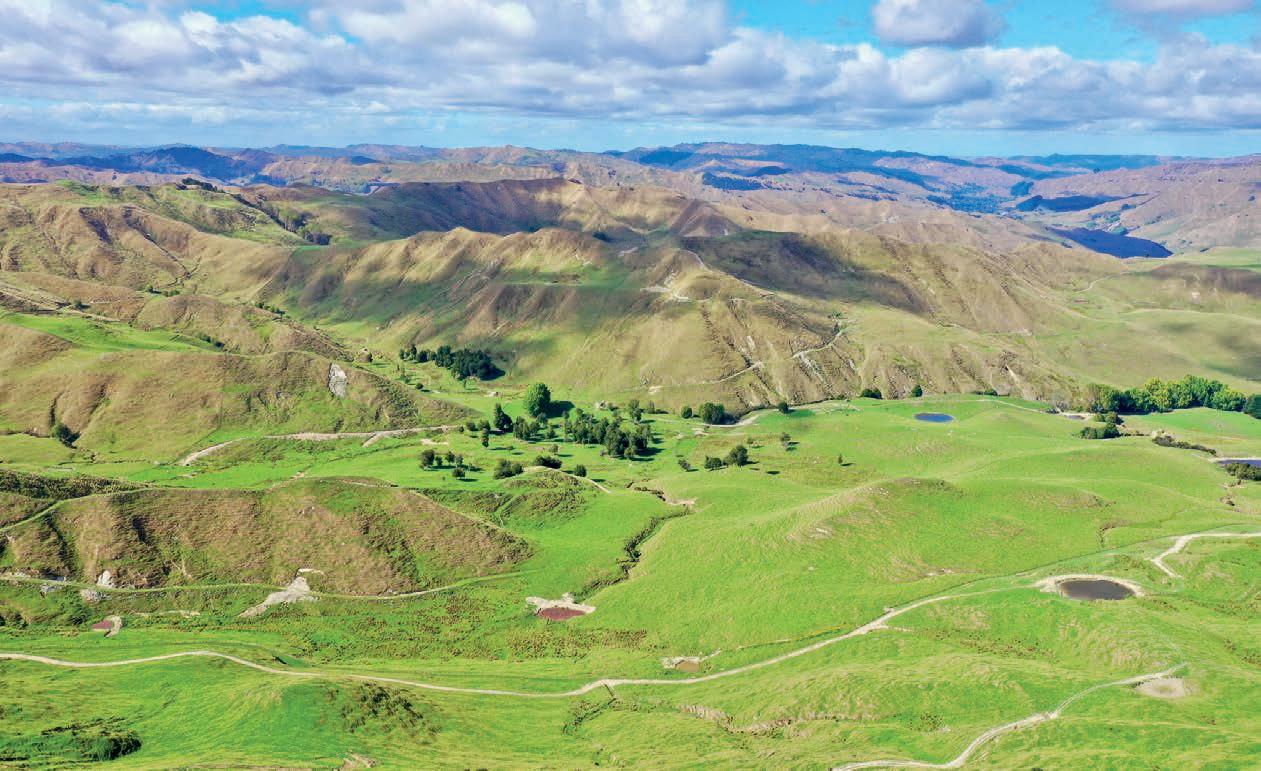
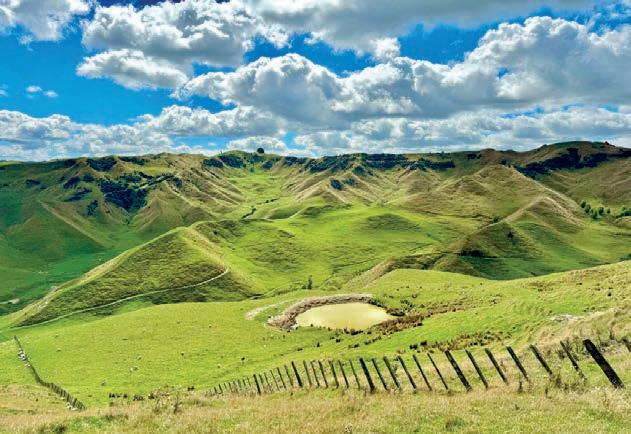





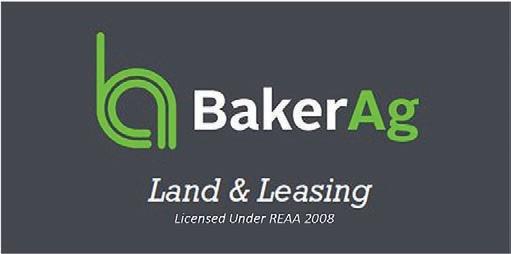
1335 Puketoi Rd, Pahiatua
BakerAg Land & Leasing Ltd seek expressions of interest for the lease of Rangedale Station.
The property comprises a total of circa 1576ha of medium to steep hill country situated on Puketoi and Pori Roads, some 40km south east of Pahiatua.
The property has a large character homestead, second dwelling, additional cottage plus two woolsheds, and a full range of farm buildings and other facilities.
The property has been run as a breeding operation with an assessed winter carrying capacity of around 11,500su.
Proposals for leasing of the farm are sought which will include desired lease terms and conditions including lease term.
Farm open days for inspection will be held in April and May 2024 with dates advised to prospective lessees.
The deadline for expressions of interest is 4pm on Friday 16th May 2024
For further information regarding the lease opportunity including property description, draft lease and details of inspection days please contact:
Fergus Rutherford – BakerAg Land & Leasing Ltd
0274 836 293 or fergus@bakerag.co.nz


1309 Kahutara Rd, South Wairarapa
BakerAg Land & Leasing Ltd seek expressions of interest for the lease of Wairio Station.
The property comprises a total of circa 1397ha of alluvial flat to undulating land situated on Kahutara Road, some 20km south west of Martinborough.
The property has a homestead, five other dwellings, woolshed, and a full range of farm buildings and other facilities.
The property has been run as a finishing and cropping operation with cattle and lambs finished each season.
Proposals for leasing of the farm are sought which will include desired lease terms and conditions including lease term.
Farm open days for inspection will be held in April and May 2024 with dates advised to prospective lessees.
The deadline for expressions of interest is 4pm on Friday 16th May 2024
For further information regarding the lease opportunity including property description, draft lease and details of inspection days please contact:
Fergus Rutherford – BakerAg Land & Leasing Ltd
0274 836 293 or fergus@bakerag.co.nz




CENTRAL NORTH ISLAND
Oraukura Station (Oraukura No 3 Incorporation)
• Approx 998 effective hectares, 10,000+ stock units sheep, cattle and deer
• Flat to easy rolling ash and pumice approx 35km from Taumarunui and Turangi
• Well developed with full facilities including two dwellings, 330ha deer fenced, approx 100 paddocks, reticulated water throughout
• 6 years from 1 June 2024 (flexible)
First Right of Refusal offers potential for longer term relationship with compatible Tenant
• Possibility of 1200ha adjoining property becoming available for lease in 2025
Joint inspections proposed 1pm Thursday 18 April and Thursday 2 May Information pack with basic lease terms & conditions, proposal requirements and inspection details available from:
LK0118305©
Geoff Burton Farm Business Management
Taumarunui
Phone 07 895 8052
gtb@xtra.co.nz












We are looking for a passionate stock person that’s self-driven, with a keen eye for detail, to join our large-scale lamb finishing operation. Fairfield Farms is based 10 minutes north of Ashburton.
Job Description
Your role will be to work alongside our Farm Supervisor with a strong focus on efficiently finishing lambs to their full potential. Some seasonal tractor work will also be required outside of lamb season, predominantly around the summer harvest.
Qualifications
The successful candidate will have:
• A passion for everything livestock and a desire to learn and progress
• Attention to detail and take pride in completing tasks to a high standard Good stock and animal husbandry skills
• Own 2 – 3 working dogs under good command
• Basic computer skills
Additional Information In Return we can offer:
• A challenging but rewarding work environment
• Competitive starting remuneration rates depending on experience
• On farm housing available if required Ready to start? Applicants must be legally entitled to work permanently in New Zealand. If this sounds like the opportunity you have been looking for please apply now via email to info@fairfieldfarms.co.nz and include a cover letter and a copy of
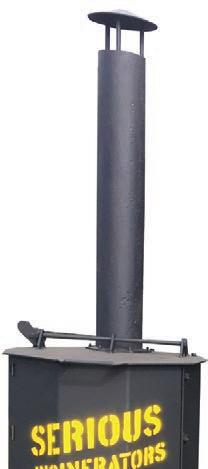

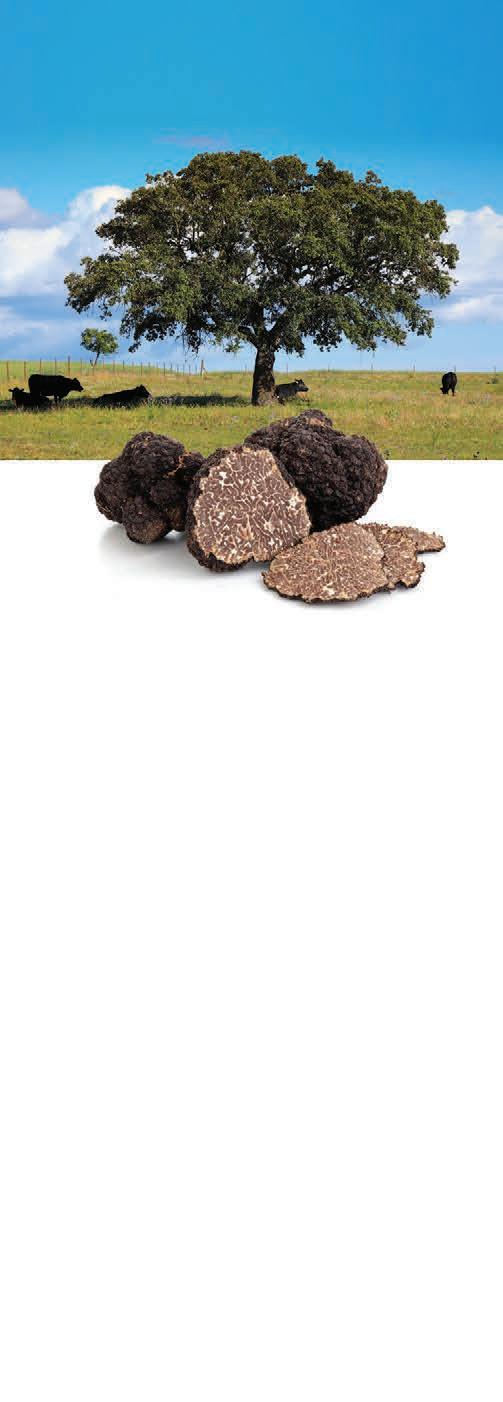

It was a total victory - they don’t lose a single sailor. Later that evening, the first mate comes up to the captain and asks “Hey captain, before the battle you asked me to go and get a red shirt.
Why?” The captain replies, “Because if I happened to be shot and was bleeding, the red shirt would hide the blood so the crew would not notice and they’ll continue to fight on!”
“Wow, that’s awesome!”
The next morning, the crows nest calls down, “Captain! 50 enemy ships on the horizon!” The captain turns to the first mate and says “Bring me my brown pants!”


A/c Ashley Family Trust
(Shane & Jacque Ashley & Family)
Date: Friday 12th April 2024
Address: Matamata Saleyards, (114 Waharoa East Rd)
Start Time: 11.30am will be available for online bidding
COMPRISING:
100 ANGUS BREEDING COWS of four age groups
Available to share farm, graze, or wanting a lease property in the South Island

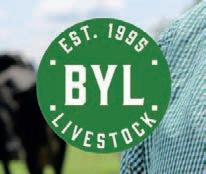


130 x In-Milk Friesian/Friesian Cross Cows (4 -7 year olds)
DETAILS:
BW289 PW480. 649M/S (to 4th March 24)
Still producing 2.1m/s on 10th March 24. 115,000 SCC
• DTC 15/7/24 to AB Friesian for 4 weeks only (vetted in-calf on 2/4/24)
System 3, rotary shed. Lepto Vaccinated, TB C10, EBL Free
• Mycoplasma Bovis not detected
AUCTIONEERS NOTE:
Our vendors are exiting the industry and are selling the farm. This capacious, strong uddered spring portion of the herd (best 130 cows) are available for purchase. The auction cows are a portion of a 900-cow herd, with the autumn and Jersey content already sold. Don’t miss the opportunity to purchase these highly recommended cows.
PAYMENT TERMS / DELIVERY:
Deferred payment due by the 20th September 2024.
Delivery on the day of the auction. For those outside of the region, or those without farm access until the 1st June, the cows will be transported back to the farm and milked until transport can be arranged or dry cowed for delivery no later than 20th June (Vendors cost).
CARRFIELDS LIVESTOCK AGENT: John Price 027 594 2544
OUR VENDOR: Shane Ashley 027 248 8570
WAITARA STATION ON-FARM LAMB SALE
C/- Lloyd & Sonia Holloway & Family, 348 Brooks Road, Te Pohue
Thursday 18th April 2024 11am viewing 12pm start
Comprising of:
The incalf heifers are a superb line and recommended to all intending purchasers requiring well-bred heifers.
TB status C10, BVD bulk milk tested negative.
An auction not to miss if requiring top quality dairy stock.
Inspection prior to auction is welcomed.
Catalogues available. Online Bidding available
Delivery from 23/4/24 – Payment 1/6/24
Enquiries: Steve Quinnell 027
lambs
Auctioneers note:
Quality hill country bred lambs born late October. Antibiotic free. FAP Property.



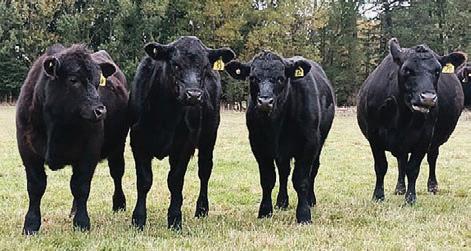
• This is your chance to gain some pure breed Angus genetics. Size of mob can be tailored to suit.
• Very quiet temperament, foothill bred, with consistent calf growth rates.
• Calving starts 6th September.
• As owners we will provide sire bulls, transport, a proportion of animal health costs, and share of labour.
These girls have become available due to farm sale and change of farming practice. All we are asking is a chance to retain these girls and share the reason they are worth holding on to. This is your opportunity to build some breeding stock or retain fattening cattle as you desire, without any cash outlays.
A suitable tailored agreement to meet the specific needs of both parties can be discussed further, confidentiality assured.
If you have a lease possibility, then we would very much like to hear from you.
Any enquiry of interest would be appreciated sooner rather than later.
Please phone/txt Tim 022 077 0040
Email di.tim@farmside.co.nz
Key: Dairy Cattle Sheep Other
UPCOMING MATAWHERO
Tuesday 16 April - 11am
Grand opportunity to purchase station bred cattle
Follow us online for updates -
Contact:
Jamie Hayward 027 434 7586
www.AgOnline.co.nz
PGG Wrightson Livestock - East Coast
A lack of feed has meant the demand for store lambs is almost non-existent, but bargains remain for those who can carry stock through winter.
 Alex Coddington MARKETS Livestock
Alex Coddington MARKETS Livestock
AS THE days become shorter, the supply of lambs entering the store market continues to expand. Unfortunately, demand for lambs in recent weeks has been close to non-existent and the push for store lambs to hold their value has diminished, despite a relentless battle by vendors.
The changing season marks the time of year to assess feed capacity and start offloading in accordance with winter stocking rates.
The influx of store lambs to market is always expected to cause some price downside. However, last year things played out a little differently and store lambs had been holding strong relative to schedule.
This time last year the country was flush with feed. Cooler temperatures had slowed growth but there was an apparent lack of any sign of drought across North Island regions. While the market twelve months ago may have been oversupplied with lambs, there was enough demand to absorb the seasonal increase as buyers banked on a strong winter return. As a result, heavy store male lambs had been steady through the opening months of 2023, trading at $3.40/kg in the North Island, or around 47-48% of schedule.
This year, autumn dryness is prevailing across much of the North Island, the exception being parts of the King Country and Waikato that still seem comfortable with feed.
On the west coast of Northland, most of Wairarapa and Wellington, the weather has been very dry and most farmers are short of feed.
Last week 32kg male lambs quoted at $2.50/kg ceased to generate any interest, causing further downside to a new level of $2.45/kg. This week’s AgriHQ lamb price indicator of $6.10/kg would put these lambs at 40% of schedule.
In a year of autumn drought, this kind of percentage is to be expected. The last time areas in the North Island experienced this kind of autumn, the country was in lockdown, making it hard to compare the outlook. However, as a reference to this time in 2020, 32kg male lambs were trading for $2.80/kg against a lamb slaughter price of $7/kg, equating to around 40% of the schedule.
This time last year slaughter schedules for lamb were lifting in both islands, and buyer confidence was well supported by the expectations of active Chinese demand as they emerged from lockdown.
Prior to last year the average lift in farmgate prices between May and September was $1.10-$1.15/ kg.
Last year farmgate prices fell from autumn to spring – a first


in 11 years, as China demand recoiled. This year export demand from China has flatlined with little expectation of any lift in demand or price in the short-term. However, not all is lost with our
“
traditional markets stepping up to the plate, providing a glimpse of optimism.
Last year the steady appetite for store lambs and an expected firm outlook on slaughter returns kept
prices for lamb on the stronger side.
The catch to the dynamic was the difficulty of sourcing a good deal on a line of “cheap” store lambs.
On the Thursday before Easter in Feilding last year, 2500 lambs weighing on average 35.5kg were auctioned at an average price of $3.42/kg. Similarly, at Stortford Lodge, there were over 5000 lambs yarded.
Last week yard activity was close to zero. Feilding cancelled at late notice, while Stortford Lodge sold only 900 lambs with 30-40kg males returning $2.36-$2.53/kg.
Overall, lambs averaged $3.41/ kg at an average weight of 36kg. Last week yard activity was close to zero. Feilding cancelled at late notice, while Stortford Lodge sold only 900 lambs with 30-40kg males returning $2.36-$2.53/kg.
In stark contrast to last year, the window of opportunity is seemingly open for winter traders to generate a margin – if they have the means to hold lambs over winter.
Hence the period of weakness to this market while most of the North Island waits for more rain. The forecast for slaughter price is for there to be some upside but at this point it’s nearer the lower end of historical levels, sitting just shy of $1/kg to September.
This would make current 32kg male lambs at $2.45/kg relatively good buying based on a firming slaughter market in the months ahead.
always
Grass is playing a big a factor in weaner fairs and calf sales around the country. Despite the drying conditions in the North Island and a large yarding of 2224-head, the results at Feilding’s steer and bull fair last Wednesday were solid. Angus steers, 257-280kg, collected $1010-$1090 and a 226kg pen of Charolais fetched $1030. Through Canterbury the feed is even shorter and this meant that Temuka’s Eastern and Southern calf sale returned $870-$970 for 255292kg Angus and Angus-Hereford steers. A larger supply of heifers meant those of similar weight and breed earned $630-$725. Further south, Gore posted $905-$1050 for 250-290kg Angus steers.









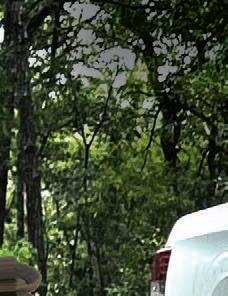


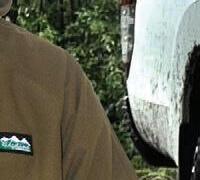







































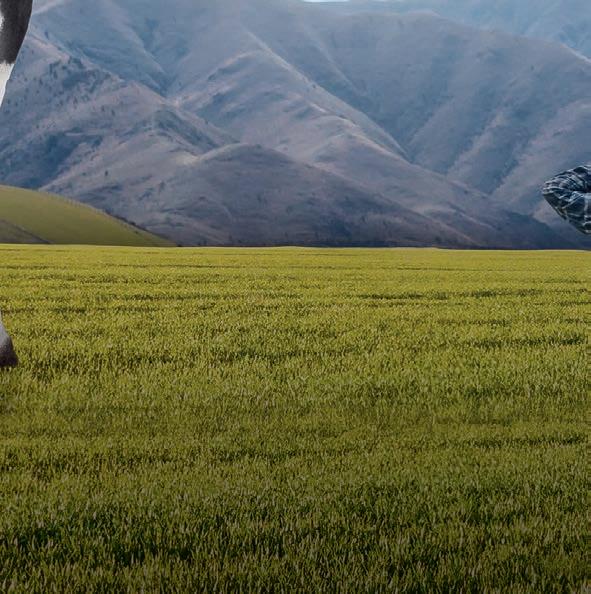


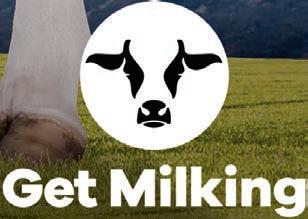



SPANNING spring 2023
and then over summer the traditionally windier and drier set-up of El Niño has brought drought or extremely dry conditions to parts of the country for over half a year. Rainfall has been hit and miss during this event and that’s brought pockets of dry but not the widespread problems we’ve seen in previous times.
The longer nights and shorter days also tend to help encourage lingering showers and more low pressure in the mix.
one thing usually happens – those inland and eastern parts of the country often dry out. As we go through April central New Zealand is dry (upper South Island and lower North Island) as is a large part of Northland/Far North.
Autumn doesn’t always bring the rain relief you need – like El Niño, it too is often westerly driven and this also keeps many eastern and northern parts of both main islands in somewhat of a rain shadow.
However, autumn usually brings more chaos – and if you’re in need of rain then chaos is better than settled. Over the coming weeks more lows and cold fronts should cross NZ. Sometimes these can be disappointing for those most in need – for example the top of both islands, such as Marlborough and Northland.
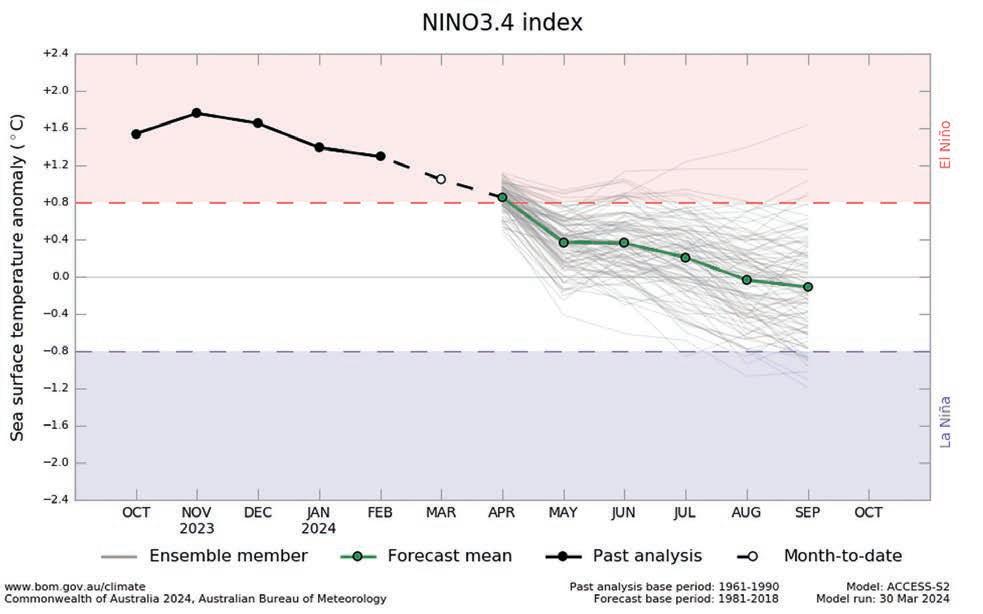
the door, it’s a little milder, and some limited wet weather is on the horizon. Philip Duncan
Each El Niño is unique, like our fingerprints – on paper they look similar but up close there are differences.
In a small, mountainous, island nation like ours anything can happen as our weather is heavily influenced by the Southern Ocean and Australia regions. However
But the longer nights and shorter days also tend to help encourage lingering showers and more low pressure in the mix – despite a lot of high pressure still being expected. The longer nights in April also lead to heavy dews which, with dead or dry grass, can encourage facial eczema in warmer areas. According to Awanui


Veterinary, the spore counts have been steady and currently match levels very similar to the previous three years.
So far this autumn isn’t proving to be too cold. Sure, there have been some cold days and cold starts – but there’s also been a noticeable lack of frosts around the country.
It’s only early in the season but I’d be expecting to see a few more frosts than we have




now, particularly in the South Island. The fading El Niño and approaching peak of autumn are most likely to blame. As I wrote about last week, if our weather comes sideways (that is, more westerlies or easterlies) it tends to be slightly milder for us overall.
NZ is a tricky country to forecast at the best of times. I wish I had an easy answer for those who need rain. All we can do is focus on the positives – El Niño is heading out
• High pressure kicks off this week and drifts east
• Northerly winds behind the high
• Low pressure and a cold front from the west late week















